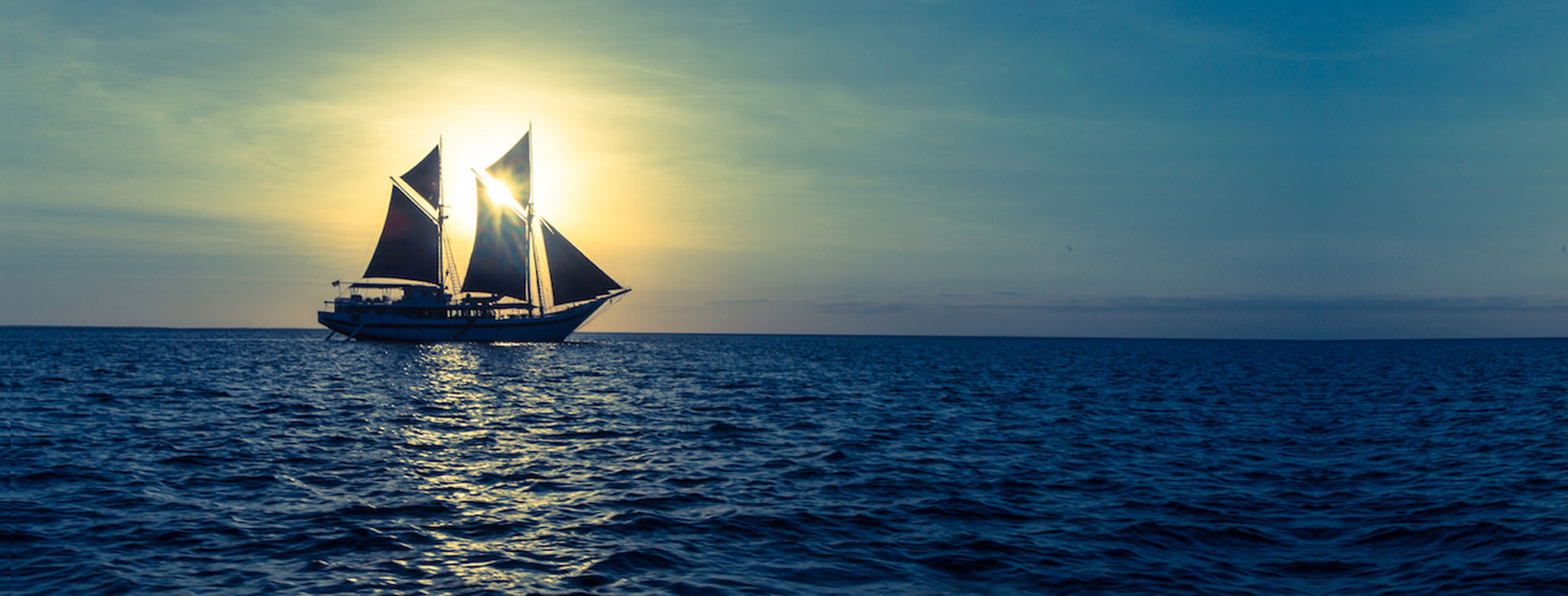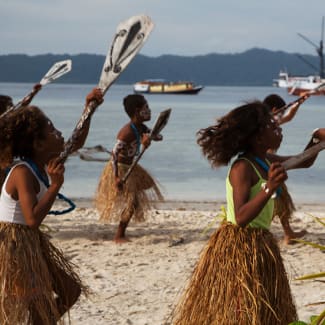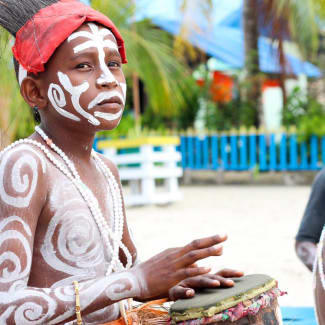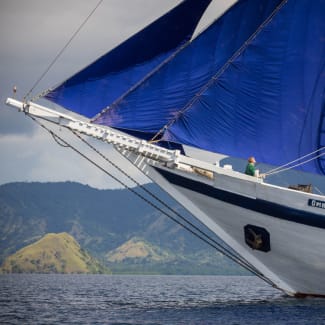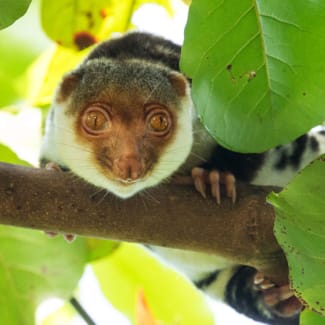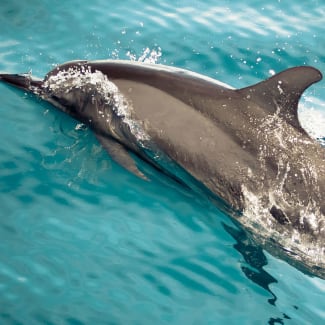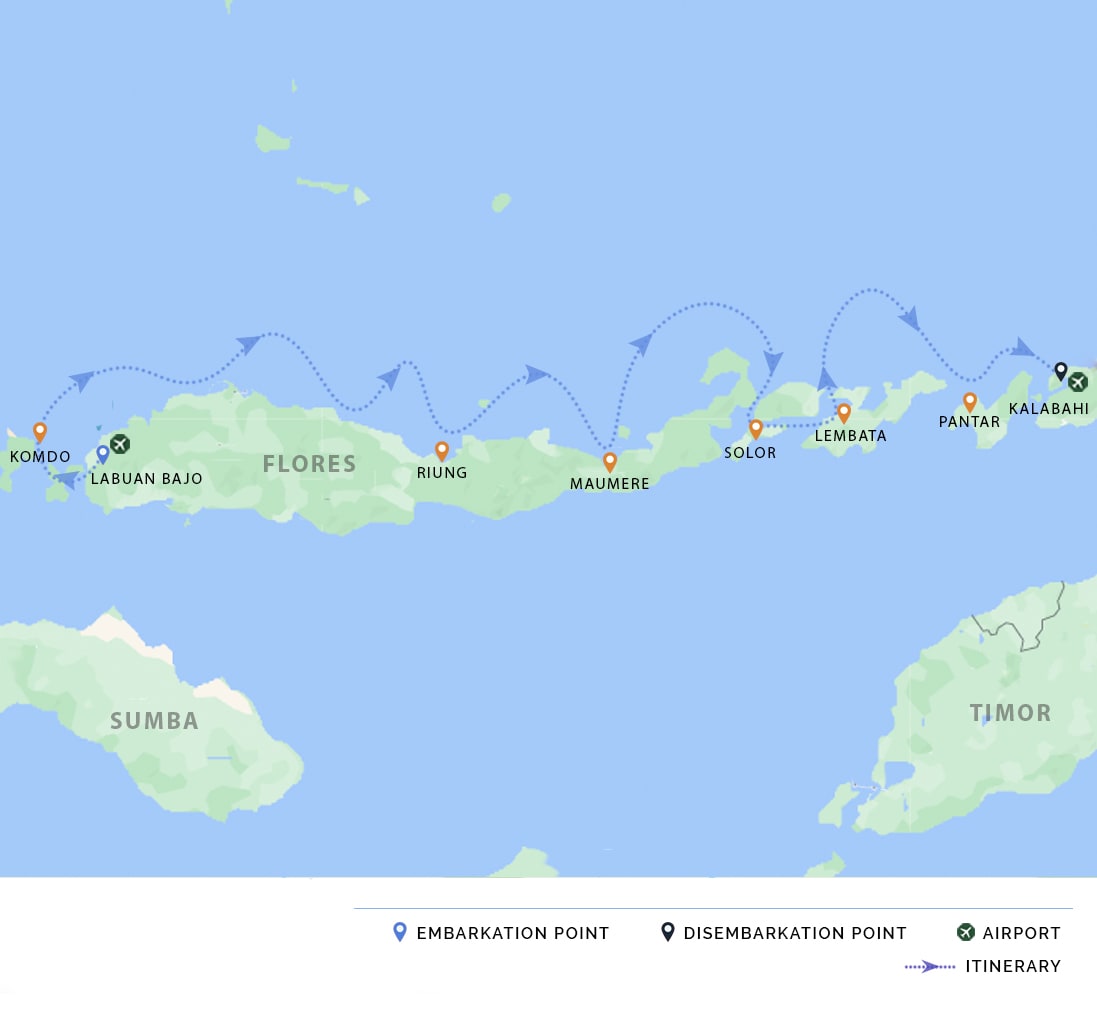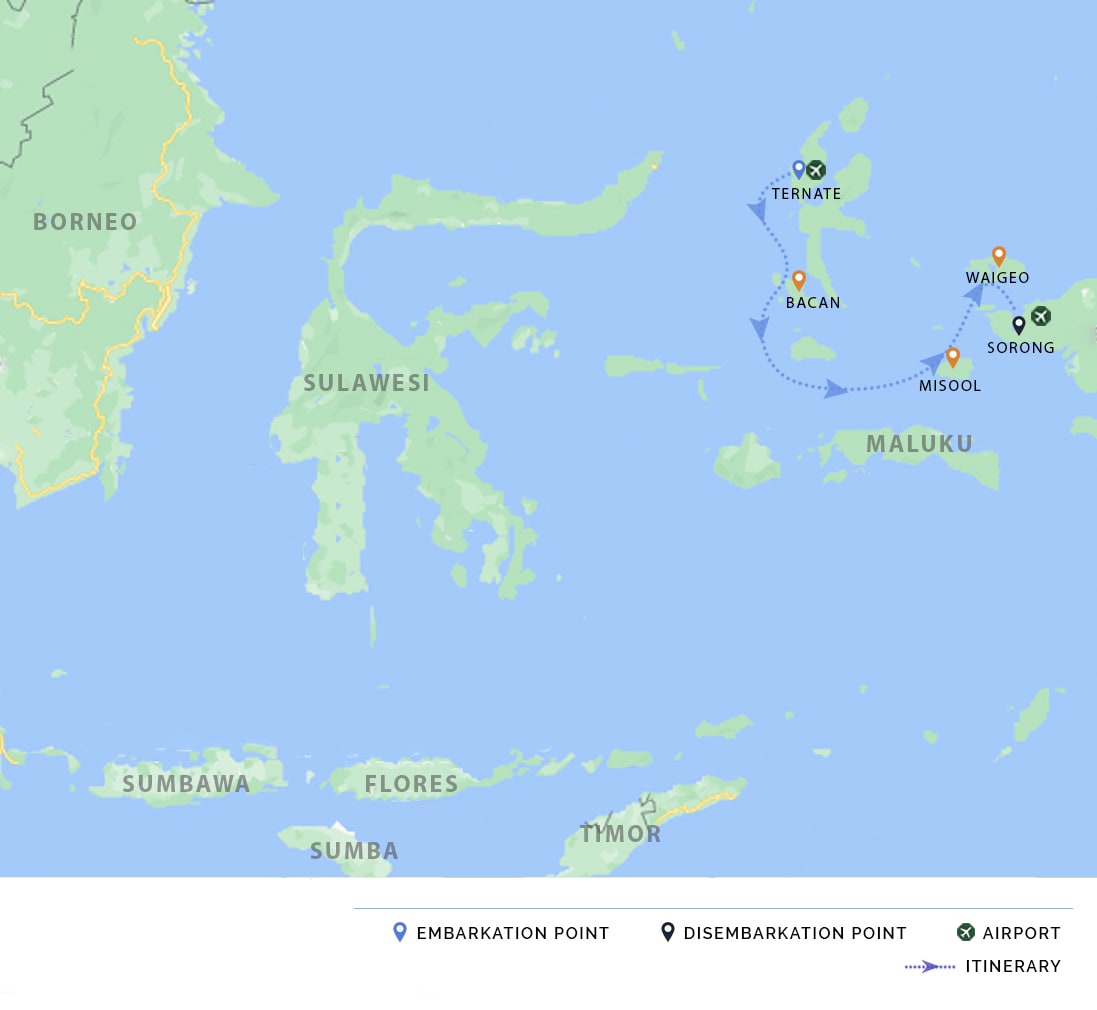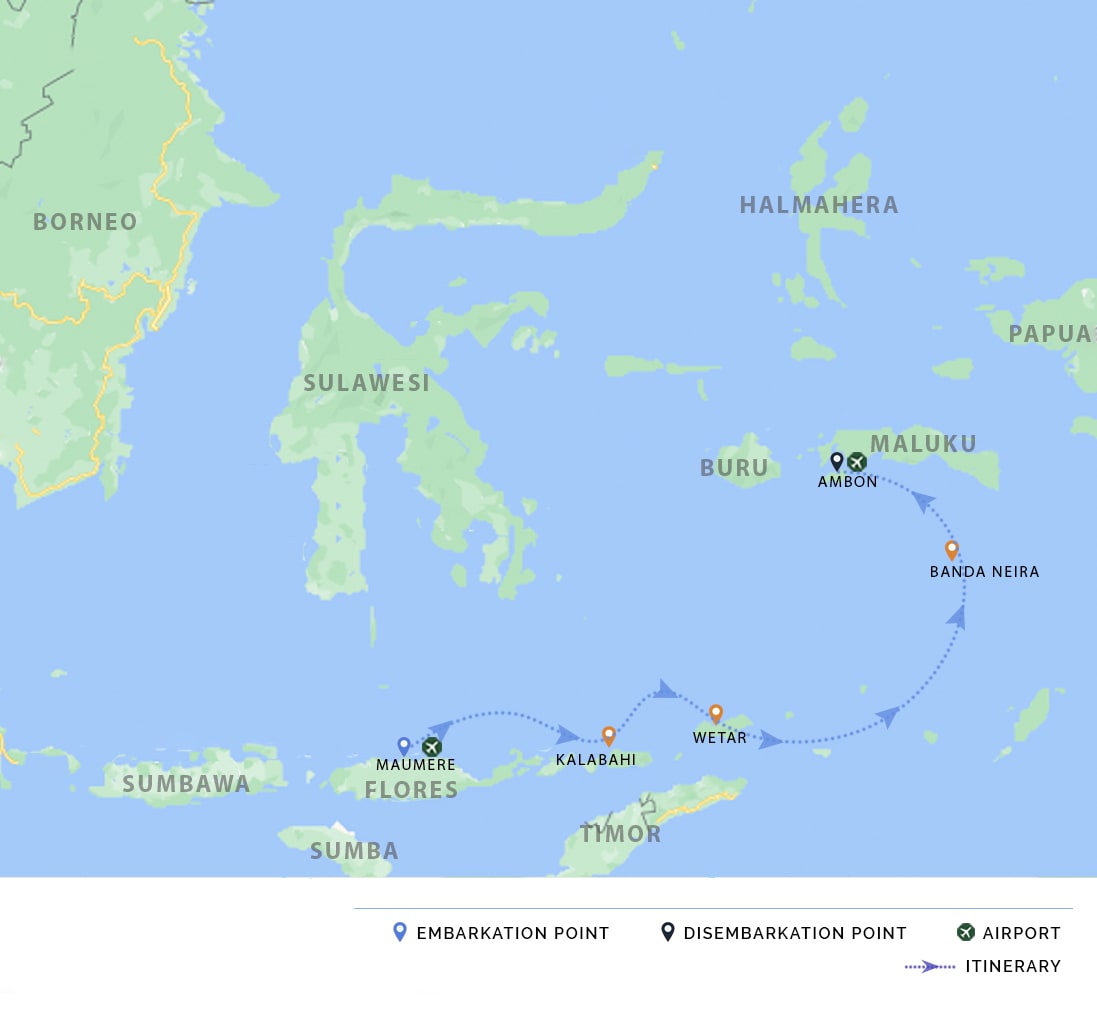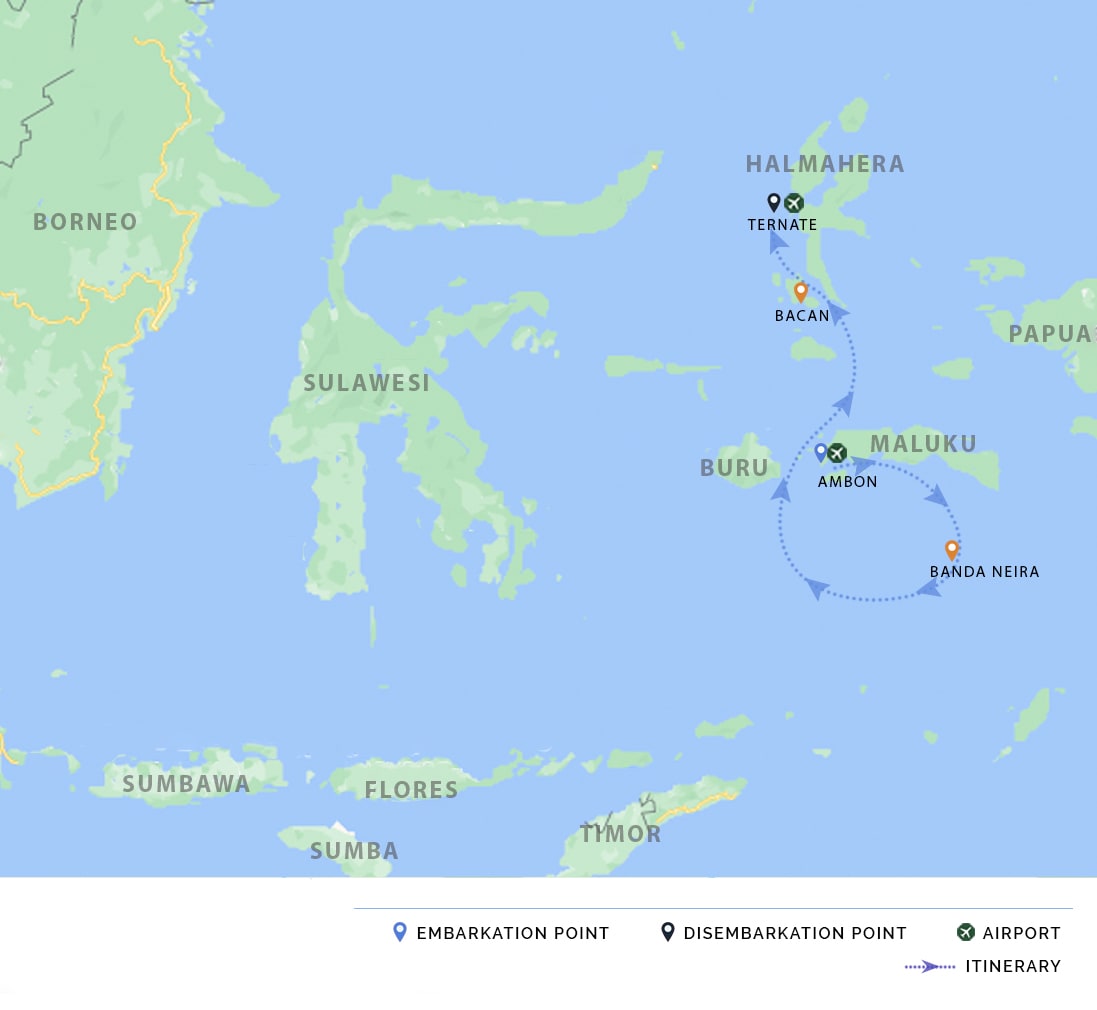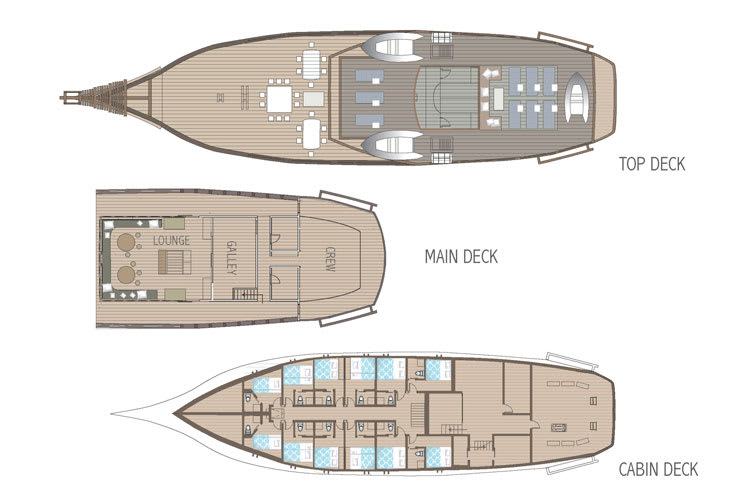Overview
Offering seasonal cruises through some of the least-explored waters on the planet, the Ombak Putih, meaning ‘White Wave’, is a traditional, Indonesian phinisi schooner. Her shapely curved bow and elegant lines are the embodiment of the centuries’-old handcrafted boat-building skills of the Bugis people from the island of Sulawesi.
With a maximum capacity for 26 guests, the Ombak Putih presents 12 private, air-conditioned double and twin cabins located below decks, some of which are equipped with a third bed for families traveling with a child. Each cabin has an en-suite bathroom, ample stowage space, and a large porthole that fills the room with natural light and allows for a glimpse of the tropical surroundings. If the weather is balmy, the crew will set up a bed for you on the Top Deck for a night under the stars.
Life On Board
In between shore excursions and snorkeling trips, life on board is one of pure enjoyment, with top-class service. The vast wooden Main Deck is all about relaxation. From here, you can watch the dramatic volcanoes, breath-taking landscapes and seascapes of Indonesia pass by. You will almost certainly spot flying fish or dolphins cavorting alongside the boat from the cushioned seating at the bow. A canopy-shaded outdoor dining and seating area is where all meals are served.
The spacious, air-conditioned salon includes the ship’s library, a presentation TV, small bar, and coffee station. On the Top Deck, an uncovered bow facing area and a covered viewing area aft of the wheelhouse provide a plentiful supply of benches, loungers, couches and bean bag chairs for reading, napping and socializing.
Three delicious daily meals are served buffet style, prepared by talented on-board chefs, who pride themselves on being able to create a selection of Indonesian, Western and Asian delights, using only the best quality meat, seafood and fresh produce available. You can expect to feast on the day’s catch of fish, exotic fruits and vegetables from local markets. Snacks are always available, as well as afternoon tea.
All About The People
Each Ombak Putih cruise is led by professional, multilingual tour leaders who will escort you in all activities both on land and at sea, answer your questions, provide in-depth daily briefings, and ultimately ensure the smooth running of every aspect of the cruise. Look forward to musical entertainment and some highly attentive service from the crew, whose smiles and friendly personalities offer an even greater insight into the Indonesian way of life.
The team are deeply committed to the integrity and the preservation of the Indonesian Archipelago and its peoples, taking pride in their ethics and respecting the environment in which they sail, and making sure their respectful intrusions leave only footprints—their only traces their contributions to the local communities who will enrich your itinerary so much.
Indeed, as well as various social initiatives including their Peek Under The Surface initiative whereby they distribute educational books and swimming goggles to teach local children about life under the sea, you can also purchase beautifully illustrated books on board about the famous naturalist Alfred Wallace, and for each English version of the book bought, ten books in the Indonesian language are printed and provided to local children.
A World Of Water-Based Adventure
The 138-foot Ombak Putih is outfitted with up-to-the-minute safety equipment and communications technology, and equipped with high-quality tenders, kayaks, stand-up paddleboards and snorkeling gear for water-based fun. The vessel is powered by a reliable “workhorse” engine, which is assisted by sails when and if the wind is cooperating.
Charting a course through some of the more remote corners of the Indonesian archipelago, in search of pristine coral reefs, rare native birds and wildlife, and traditional cultures, the Ombak Putih’s old-world charm will imbue your voyage with a magic that harkens back to the days of the spice traders.
These adventurous, expert-led cruises are family-friendly (indeed there are even special dedicated family adventure departures!), great for groups of friends, romantic for couples, and are also a good option for solo travelers who pay no single supplement if they are willing to share a cabin.
*Special guest expert departures are available throughout the season:
> 12-Day East Indies Exploration: Culture, Sea & Spice departing 6 Sep 2023 – Jeffrey Mellefont (specialist marine writer and photographer, seafaring history expert and research associate of the Australian National Maritime Museum)
> 12-Day The Scents of the Spice Islands departing 20 Sep 2023 & 12-Day In Search of Wallace and His Living Treasures departing 4 Oct 2023 & 4 Oct 2024 – Dr. George Beccaloni (zoologist, evolutionary biologist, historian of science, and founder and director of the Wallace Correspondence Project)
> 10-Day Jewels of Raja Ampat departing 29 Dec 2023 & 10 Jan 2024 – Vincent Chalias (marine biologist)
> 8-Day Whale Sharks, Corals & Dragons (Family Adventures) departing 30 Jul & 10 Aug 2024 – Ray & Angela Hale (UK-based conservationists and naturalists—Angela is also a painter and illustrator)
Itineraries & Prices
All itineraries are subject to change due to seasonal weather conditions (and resultant variations in river and tributary water levels) affecting accessibility to locations. Thus navigation routes, times and excursions may need to be modified at the cruise captain’s or your guide's discretion.
Embarkation
AM: Taking the early morning flight from Bali, you will be met at the airport in Komodo by your tour leaders and be taken straight to your boat. And as you settle into your new home, we will head to our first snorkeling spot; a coral restoration project where you will see how the corals and fish populations have grown since they were first transplanted in 2014.
Go ashore on Komodo Island in search of the fearsome Komodo dragons, found only in the Komodo National Park. This is the world’s largest lizard, growing up to a length of three meters and weighing up to approximately 70 kilograms. Enjoy some magnificent snorkeling on some of the Komodo Park’s best reefs.
PM: Swim with manta rays as they feed on the current and circle the so-called cleaning stations, where small fish remove parasites from their skin. Snorkel at a favorite hangout of sea turtles, where we will have a chance to swim with these gentle reptiles as they cruise along the shallow water of the reef.

Exploring Komodo National Park
AM & PM: Go ashore on Komodo Island in search of the fearsome Komodo dragons, found only in the Komodo National Park. This is the world’s largest lizard, growing up to a length of three meters and weighing up to approximately 70 kilograms. Enjoy some magnificent snorkeling on some of the Komodo Park’s best reefs. Swim with manta rays as they feed on the current and circle the so-called cleaning stations, where small fish remove parasites from their skin. Snorkel at a favorite hangout of sea turtles, where we will have a chance to swim with these gentle reptiles as they cruise along the shallow water of the reef.

Beautiful Uninhabited Island
AM: Wake up off the coast of a beautiful uninhabited island with a beach of pure white sand with some sparkles of powdered red coral, creating the effect of a “pink beach”. We will spend the morning here, swimming, paddle boarding, and snorkeling on the beautiful coral reef that lies parallel to the beach.
PM: Over lunch, we will cruise to a nearby active volcanic island where we will see a large wooden pinisi boat with the same pedigree and history of Katharina’s very own ships being built on the beach. Walking around this small village, get a feel for their simple way of life, chat with the locals and maybe buy some handmade textiles as a souvenir.
Spend the day at a strange and mystical volcanic island with a sunken crater lake in its center that was filled with saltwater when the nearby Mt Tambora catastrophically erupted in 1815. Here we will swim, kayak and paddleboard on the lake, and the more adventurous can go trekking around the crater rim.
Experience one of our famous beach BBQs under a night sky filled with millions of stars as you feast on the amazing local delicacies prepared by our chef, and all accompanied by live musical entertainment from our talented crew. Another highlight of our visit to the island will be the sight of thousands of flying foxes that fly at dusk from the island to feed on the mainland.

Mystical Volcanic Island
AM: Wake up off the coast of a beautiful uninhabited island with a beach of pure white sand with some sparkles of powdered red coral, creating the effect of a “pink beach”. We will spend the morning here, swimming, paddle boarding, and snorkeling on the beautiful coral reef that lies parallel to the beach.
PM: Over lunch, we will cruise to a nearby active volcanic island where we will see a large wooden pinisi boat with the same pedigree and history of Katharina’s very own ships being built on the beach. Walking around this small village, get a feel for their simple way of life, chat with the locals and maybe buy some handmade textiles as a souvenir.
Spend the day at a strange and mystical volcanic island with a sunken crater lake in its center that was filled with saltwater when the nearby Mt Tambora catastrophically erupted in 1815. Here we will swim, kayak and paddleboard on the lake, and the more adventurous can go trekking around the crater rim.
Experience one of our famous beach BBQs under a night sky filled with millions of stars as you feast on the amazing local delicacies prepared by our chef, and all accompanied by live musical entertainment from our talented crew. Another highlight of our visit to the island will be the sight of thousands of flying foxes that fly at dusk from the island to feed on the mainland.

Relaxing Day
AM: We will have chance for an early morning swim with whale sharks, the gentle giants of the sea. These massive but harmless animals have long congregated here in the bay but now, thanks to travelers like you, we have formed a mutually beneficial alliance with the local fisherman who have their traditional small floating fishing platforms in the bay that attract the sharks. We can’t make any promises, as we don’t have these wild animals on a leash, but fingers crossed we will see them.
PM: Spend the day on a beach located on a small limestone island nearby, kayaking, swimming and snorkeling, and exploring the local karst formations.
We will cruise to Labuan Aji village on the island of Moyo to visit the village and walk to a scenic waterfall where we can bathe in the refreshing cool water.

Spend The Day on The Beach
AM: We will have chance for an early morning swim with whale sharks, the gentle giants of the sea. These massive but harmless animals have long congregated here in the bay but now, thanks to travelers like you, we have formed a mutually beneficial alliance with the local fisherman who have their traditional small floating fishing platforms in the bay that attract the sharks. We can’t make any promises, as we don’t have these wild animals on a leash, but fingers crossed we will see them.
PM: Spend the day on a beach located on a small limestone island nearby, kayaking, swimming and snorkeling, and exploring the local karst formations.
We will cruise to Labuan Aji village on the island of Moyo to visit the village and walk to a scenic waterfall where we can bathe in the refreshing cool water.

Komodo National Park
AM: Enjoy a unique snorkeling experience where volcanic gasses escape in the form of bubbles from the sea floor among the corals, with the metallic black volcanic sand below being home to an abundance of very interesting invertebrates.
PM: Entering the Komodo National Park again we will go drift snorkeling in one of the best and healthiest coral reefs in the park, and for those who want to take the land-adventure to another level, you can do a sunset hike up to a gorgeous viewpoint overlooking the other islands in the park.
Visit Rinca Island, which is well known for its diverse wildlife, and maybe spot dragons, monkeys, wild buffaloes and deer as well. From the top of the hills, the scenery is breath taking.

Komodo National Park
AM: Enjoy a unique snorkeling experience where volcanic gasses escape in the form of bubbles from the sea floor among the corals, with the metallic black volcanic sand below being home to an abundance of very interesting invertebrates.
PM: Entering the Komodo National Park again we will go drift snorkeling in one of the best and healthiest coral reefs in the park, and for those who want to take the land-adventure to another level, you can do a sunset hike up to a gorgeous viewpoint overlooking the other islands in the park.
Visit Rinca Island, which is well known for its diverse wildlife, and maybe spot dragons, monkeys, wild buffaloes and deer as well. From the top of the hills, the scenery is breath taking.

Disembarkation
AM: After breakfast on our last day, we will take you on a scenic drive towards Melo Village, where you will witness the traditional Caci dance performance. Local strongmen perform a ritual whip-fight between two rivals in which the players, each armed with a rattan shield and a whip, will try to hit each other while dancing to the rhythm of traditional acoustic instruments.
PM: After lunch on the boat, we will say farewell to the crew and your fellow shipmates as you disembark and continue onto your next destination.

Disembarkation
AM: Your flight will arrive in the West Papuan port town of Sorong, the gateway to Raja Ampat. From the airport, we will transfer you to the harbor where your boat will be waiting at anchor. Once settled into your cabin, your cruise director will familiarize you with the vessel’s facilities and safety procedures.
PM: Ready to start our adventure, we will weigh anchor and set a southerly course for the Misool Archipelago, stopping for a refreshing swim along the way. We will then dine alfresco on the main deck while meeting the other passengers and crew and watching the sunset on our first day at sea.
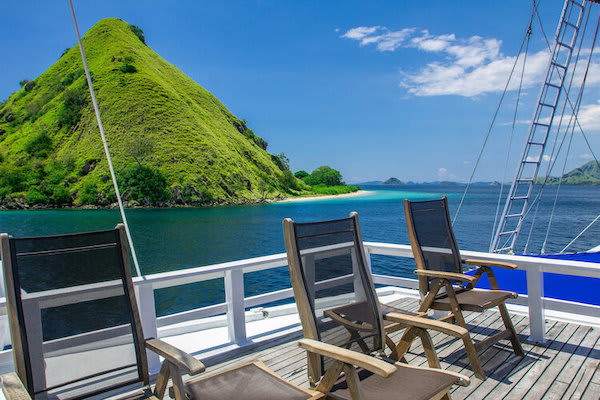
Misool Archipelago, Tomolo Bay
AM: This morning we will wake to see the sunrise over the picturesque chain of islands that makes up the Misool archipelago. The topography is typical of ‘karst dissolution,’ featuring a great number of tiny islets whose bases have been eroded over time by the relentless motion of the tides. We will spend the day maximizing everything that this fascinating area has to offer by marveling at both the marine wonderland under the water and the magnificent landscape above the surface.
PM: We can test out our paddling skills in the sea kayaks, watch for birds perched on the rocks, or just sit back and take in the glorious scenery. After a full day of island hopping through this archipelago, the boat will spend a quiet night at anchor in Misool’s Tomolo Bay.
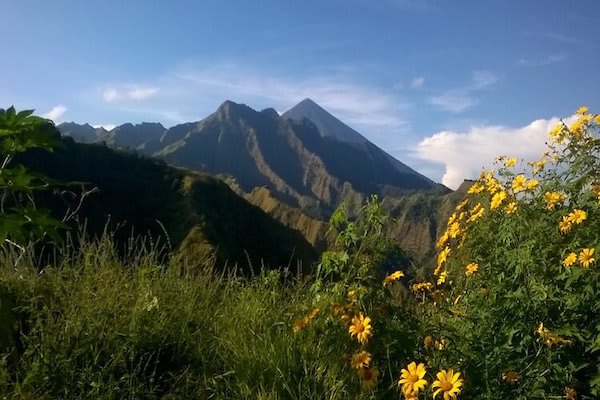
Karst Island, Island of Batanta
AM: A swim through Tomolo’s mysterious dome-topped cave is undoubtedly one of Raja Ampat’s most memorable activities. After an early breakfast, our tenders will take us into the heart of the bay to see this partially submerged cave where it is possible to swim, snorkel or simply float while gazing up at the cavernous grotto adorned with astonishing stalactites.
The more adventurous can swim or paddle through the dark waters to the other mouth of the cave. We will then move on to the mysterious stingless jellyfish lake, one of only 20 in the world where these amazing creatures exist and swim amongst the many thousands of stingless animals.
PM: After returning to the ship, we will use our tenders to explore more of this impressive maze of karst islands, both above and below the surface, complete with mysterious skull cairns in sea-cave cemeteries, and prehistoric cave paintings, estimated to be anything between 3,000 to 5,000 years old and depicting various human figures and huge human palms, fish, flowers and plants, tools and vessels. Overnight, our boat will cruise north to the island of Batanta.
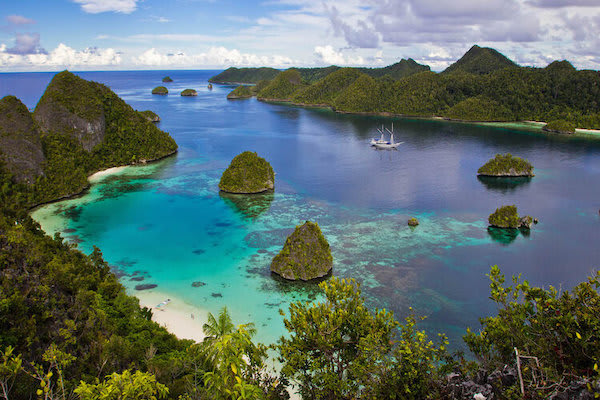
Arefi Village, Wayag
AM: After our days of marine exploration, the jungle-clad island of Batanta offers us a change of scenery and a chance to stretch our legs on an adventurous trek into the island’s interior. We anchor at the foot of Arefi Village, nestled on the north coast of the island, where we will find local guides to escort us through the mangrove waters to the start point of our trek.
PM: A short walk along the riverbed brings us to a jungle waterfall, complete with a refreshing pool for cooling off. After leaving the wilderness behind us, we will find a nearby spot to swim and snorkel before moving north to the islands of Wayag.
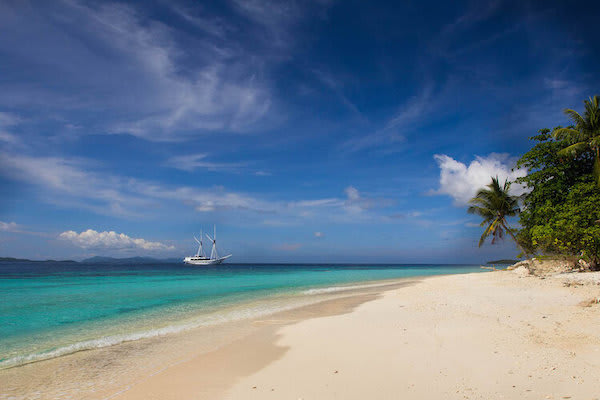
Wayag
AM: Few areas in Indonesia can lay claim to such unsurpassed natural splendor as Raja Ampat’s Wayag islands. The beauty of these picturesque karst spires is perhaps only equaled by the brilliant colors and vibrancy of the reefs and the marine life that flourishes below.
PM: Nature has carved these islands into a series of coves and lagoons, narrow channels and inlets, caves, jagged rocks and shaded sandy beaches. For those who dare, some spectacular but nearly vertical climbs are rewarded with magnificent panoramas. We will spend a quiet night here at anchor.

Waigeo
AM: The Wayag islands are Raja Ampat’s best, and we will make the most of this unique region for one more morning, navigating the maze of mushroom-shaped islands, and stopping for swimming and snorkeling.
PM: In the afternoon, we will set our compasses to return to the southern hemisphere and the island of Waigeo.
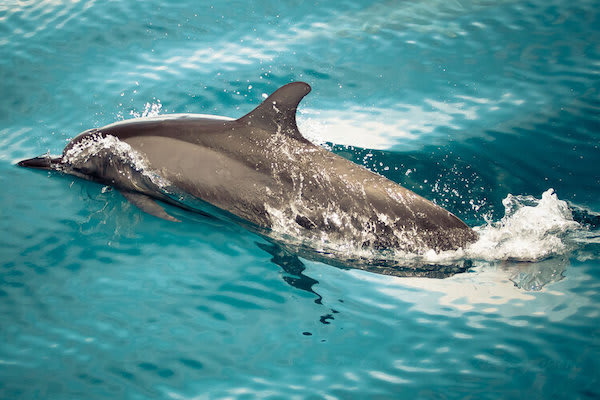
Wofoh, Aljui Bay
AM: Another full day of adventure awaits us along the convoluted western coast of Waigeo. We will begin the morning by exploring Wofoh, three island gems linked together by stretches of pristine coral reef. You can use the tenders or kayaks to navigate the islands or put your newly-acquired fish identification skills to use in exploring this vibrant reef. Or you may prefer to simply just relax on the beach.
PM: In the afternoon we will move northwards to Aljui Bay, home to the Cendanda Pearl Farm, one of the larger producers of high-quality seawater pearls in the region. Pearling is an important industry throughout Indonesia and several farms can be seen in the waters of Raja Ampat, where the farmers may grant us permission to visit their facilities and receive an explanation of the pearling processes that we have seen during our voyage.
Penemu, Aborek Island
AM: We will wake up in front of the island of Penemu, a dramatic location with a short hilltop climb to take in the amazing views. After some great snorkeling on the island’s reefs, we will set course for the tiny Aborek Island, where the local children will perform their traditional dances for us.
PM: We can also walk around the village and gain a sense of the Asai culture, which is still kept very much alive by the villagers living in this isolated place. There's a chance that we may get to see some manta rays as we snorkel, but there are no guarantees.
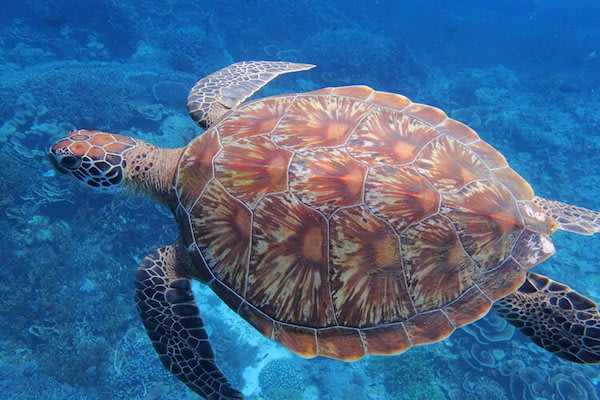
Red Bird of Paradise, Dampier Strait
AM: After waking up, before sunrise, we will follow in the footsteps of the famous naturalist Alfred Russel Wallace in a pre-dawn quest to spot the remarkable Red Bird of Paradise, one of the species that Wallace was most anxious to collect. We hope that the efforts of our trek through the forest will pay off, enabling us to catch a rare and privileged sight of the bird’s elaborate courtship dance as the day breaks over the forest canopy.
PM: Whether we spot the birds or not, for sure we will experience a wonderful trek. After lunch, we make our way through the Dampier strait, home to some of Raja Ampat’s premier reefs.
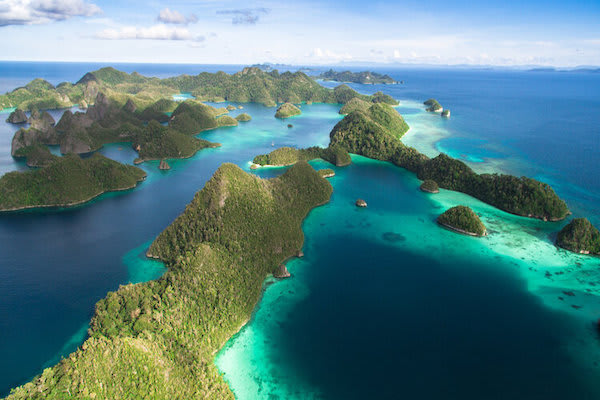
Disembarkation
AM: After our last breakfast, we will stroll around on dry land at the Doom island with traditional transportation called Becak. During the First World War, Doom island served as an administrative center of Dutch Empire administration in West Papua and continued to become the core of Sorong for some time before the city grew in mainland Papua. During the Second World War, Japanese forces occupied and fortified the island, building a network of tunnels and bunkers. The island was attacked by American and Australian aircraft throughout the war. Following the war, a fishing station was briefly established on the island before it was moved to Manokwari.
After this we will say goodbye to our crew and captain and head to the airport for our onward flights.
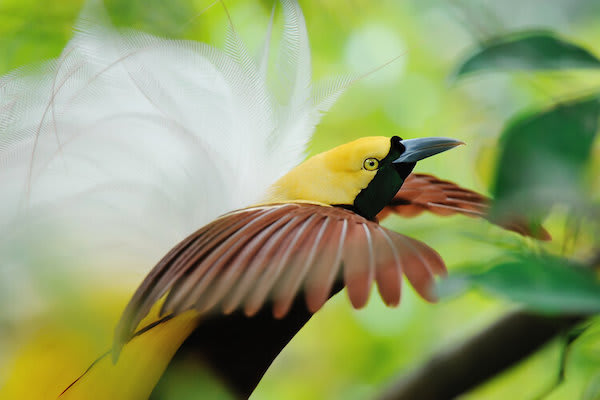
Embarkation
Embark on an extraordinary adventure as we present our highly anticipated, set to sail on a specific date. Get ready to redefine your cruising experience with a unique itinerary designed to captivate your senses and create lifelong memories.
AM: Your flight will arrive in the West Papuan port town of Sorong, the gateway to Raja Ampat. From the airport, we will transfer you to the harbor where the Ombak Putih will be waiting at anchor. Once settled into your cabin, your cruise director will familiarize you with the vessel’s facilities and safety procedures.
PM: Ready to start our adventure, we will weigh anchor, leave the harbor behind, and enter the marine protected area of Raja Ampat, home to unique birdlife and the most biodiverse coral reefs in the world. We will cruise towards the island of Waigeo, stopping for a refreshing swim along the way before watching the sun set on our first day at sea.
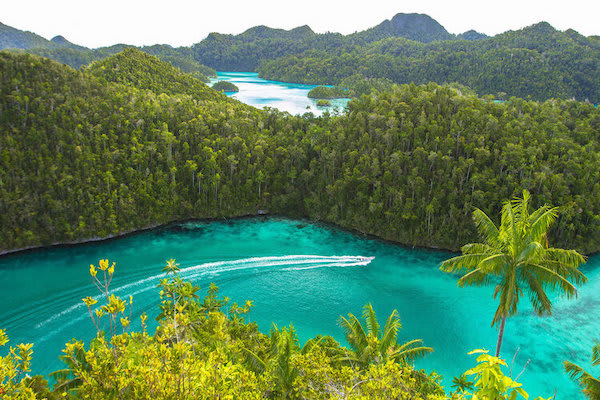
Sapokren
AM: While it is still dark, our tenders will ferry those of us who are feeling fit and adventurous to the village of Sapokren, where a local guide will take us on a challenging trek into the forest in the hope of seeing the Wilson’s bird of paradise. The male is red and black with a yellow mantle on his neck, light green mouth, rich blue feet and two violet tail feathers. The featherless crown is turquoise, ornamented with double black crosses. If we are lucky, we may be able to observe the male dancing from a distance of just five metres. Before the dance, he will clear the ground from any leaves or other obstacles that may disrupt his performance.
PM: On our way back to the boat, accompanied by the sounds of the jungle coming to life, we will be sure to spot a number of bird species along the way. We will spend the remainder of the day resting from the morning’s activities and enjoying the waters and reefs of Raja Ampat.
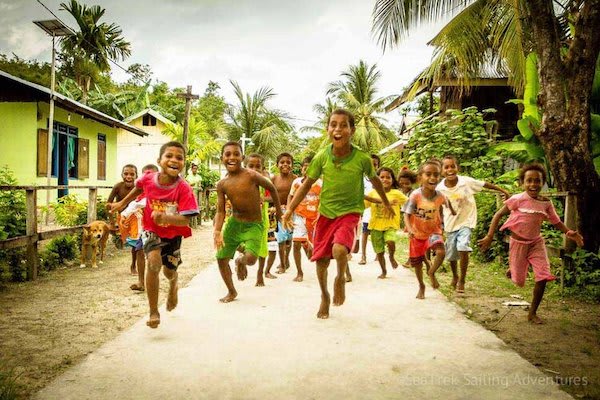
Dampier Strait, Aborek Village
AM: Today will present another opportunity for keen birdwatchers, as we rise early and walk into the forest on a pre-dawn quest to spot the remarkable red bird of paradise, one of the species that Wallace was most anxious to collect. With a little luck and the help of our knowledgeable guides, we might catch sight of this rare bird’s elaborate courtship display as dawn breaks over the forest canopy.
PM: After returning to the ship, we will turn our attention from the sky to the sea as the Ombak Putih makes her way through the Dampier strait, home of some of Raja Ampat’s premier reefs. If the currents are in our favor, we might see some of the area’s larger specimens of marine life, which are attracted to the strait’s nutrient-rich waters. We will end the day by mooring off Pulau Arborek in front Arborek Village. Here, we can easily circumnavigate the tiny island by foot and gain a sense of the Asai culture, which is still kept alive by the villagers living in this isolated place.
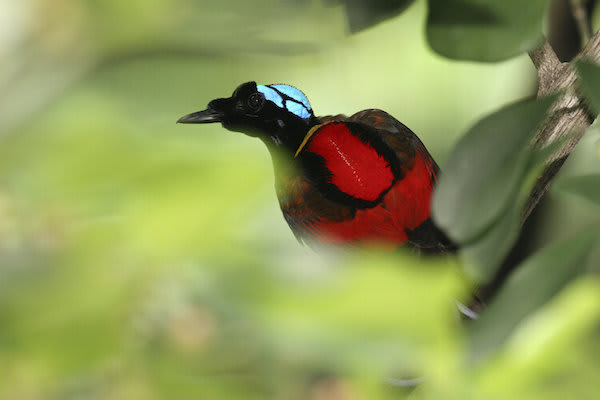
Misool Archipelago, Tomolo Bay
AM: This morning we will wake to see the sun rise over the picturesque chain of islands that makes up the Misool archipelago. The topography is typical of ‘karst dissolution,’ featuring a great number of tiny islets whose bases have been eroded over time by the relentless motion of the tides. A swim through Tomolo’s mysterious dome-topped cave is undoubtedly one of Raja Ampat’s most memorable activities.
After an early breakfast, our tenders will take us into the heart of the bay to see this partially submerged cave where it is possible to swim, snorkel or simply float while gazing up at the cavernous grotto adorned with astonishing stalactites. The more adventurous can swim or paddle through the dark waters to the other mouth of the cave. We will then move on to the mysterious stingless jellyfish lake, one of only 20 in the world where these amazing creatures exist, and swim amongst the many thousands of stingless animals.
PM: After returning to the ship, we will use our tenders to explore more of this impressive maze of karst islands, both above and below the surface, complete with mysterious skull cairns in sea-cave cemeteries, and prehistoric ‘petroglyph’ cave paintings, estimated to be anything from 3,000 to 5,000 years old and depicting various human figures and huge human palms, fish, flowers and plants, tools and vessels.

Misool
AM: Today we will have a relaxing day in Misool. We will spend the day maximizing everything that this fascinating area has to offer by marveling at both the marine wonderland under the water and the magnificent landscape above the surface.
PM: We can test out our paddling skills in the sea kayaks, watch for birds perched on the rocks, or just sit back and take in the glorious scenery. After a full day of island hopping, the Ombak Putih will begin her overnight journey.

Pisang Islands, Sipitnanam
AM: This morning we will explore the Pisang Islands. These tiny gems isolated in the vast waters of the Ceram Sea offer us a chance to relax and enjoy the sparkling white-sand beaches, clear waters, and vibrant reefs before making our way to the shores of West Papua.
PM: Here we will follow the shoreline until we reach the village of Sipitnanam. After visiting the village and meeting the residents, who spend their days fishing the nearby waters and tending their nutmeg plantations, we will continue south along the coastline through the night.
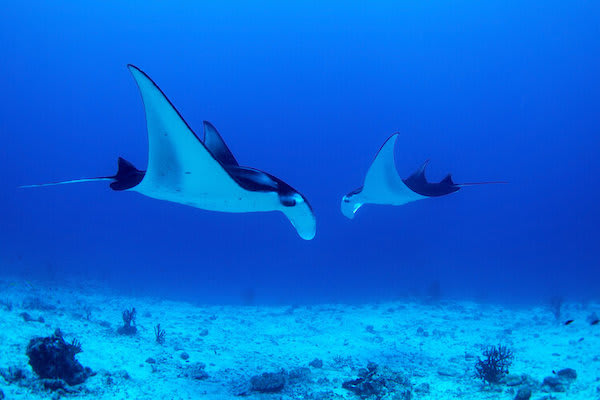
Kitikiti waterfall, Cape Papisol
AM: Today we will wake up to the beautiful sight of Kitikiti waterfall. Here, in the wilderness, a roaring river cascades down the jungle-clad mountains and crashes into the sea below.
PM: We can swim under the waterfall and explore the extraordinary reefs nearby before rounding Cape Papisol to the Karawawi region, where we will stop to refresh ourselves before journeying on to Triton Bay.

Triton Bay, Lobo Village
AM: Triton Bay is a place of unsurpassed natural splendor, where time and tides have sliced the limestone landscape into tall cliffs and numerous islands separated by lagoons and narrow channels. It is also home to fishermen who keep masses of baitfish in nets that attract a migratory group of whale sharks, which we may have the chance to swim and snorkel with. We can’t make any promises, as we don’t have these wild animals on a leash, but fingers crossed we will.
PM: We will also spend our time swimming from secluded beaches, snorkeling the vibrant turquoise waters and kayaking amongst the rocky outcrops. We can also enjoy watching the birdlife from the comfort of our tenders as we explore this extraordinary maze of karst islands, before visiting the village of Lobo, which is a friendly place at the foot of a 1000-metre-high cliff.

Namatote Passage
AM: We will make the most of our last morning in Triton Bay by cruising through the undisturbed coves, caves, and lagoons before heading north through the Namatote Passage. Namatote’s cliffs are also well known as a gallery of prehistoric art, boasting an impressive collection of cave paintings, glyphs and pictorial signs left by ancient nomads high upon the rock walls.
PM: We will spend our final evening on the ship resting at anchor and enjoying a farewell dinner with our captain and crew.
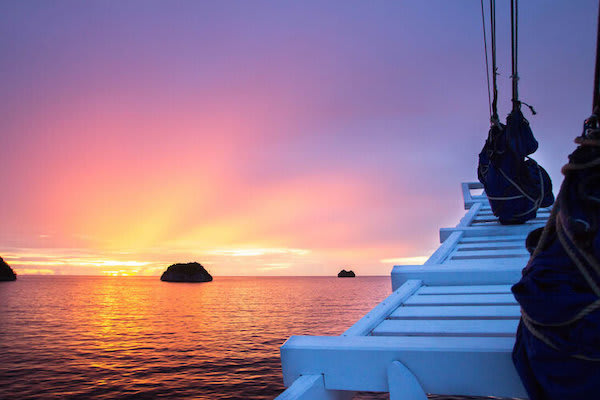
Disembarkation
AM: In the morning, we will find ourselves at anchor in the harbor of Kaimana. After a final, hearty breakfast, we will say goodbye to the Ombak Putih and her crew. Our tenders will take you ashore for your transfer to the airport for your onward travel.

Embarkation
Embark on an extraordinary adventure as we present our highly anticipated Reposition Cruise, set to sail on a specific date. Get ready to redefine your cruising experience with a unique itinerary designed to captivate your senses and create lifelong memories.
AM: Your flight will arrive in the West Papuan port town of Kaimana. From the airport, we will transfer you to the harbor where the Ombak Putih will be waiting at anchor. Once you have settled into your cabin, your cruise director will familiarize you with the vessel’s facilities and safety procedures.
PM: Ready to start our adventure, we will weigh anchor, leave the harbor behind, and head towards Namatote Passage, stopping for a refreshing swim along the way before watching the sunset on our first day at sea.

Namatote Passage
AM: Today we will cruise through the Namatote Passage. Namatote’s cliffs are well known as a gallery of prehistoric art, boasting an impressive collection of cave paintings, glyphs and pictorial signs left by ancient nomads high upon the rock walls.
PM: We will then explore the undisturbed coves, caves, and lagoons of Triton Bay, where we will anchor for the night.

Triton Bay, Lobo Village
AM: Triton Bay is a place of unsurpassed natural splendor, where time and tides have sliced the limestone landscape into tall cliffs and numerous islands separated by lagoons and narrow channels. It is also home to fishermen who keep masses of baitfish in nets that attract a migratory group of whale sharks, which we may have the chance to swim and snorkel with. We can’t make any promises, as we don’t have these wild animals on a leash, but fingers crossed we will.
PM: We will also spend our time swimming from secluded beaches, snorkeling the vibrant turquoise waters and kayaking amongst the rocky outcrops. We can also enjoy watching the birdlife from the comfort of our tenders as we explore this extraordinary maze of karst islands, before visiting the village of Lobo, which is a friendly place at the foot of a 1000-meter-high cliff.

Cape Papisol, Kitikiti Waterfall
AM: Today we will round Cape Papisol to the Karawawi region, where we will stop to refresh ourselves before journeying on to the beautiful Kitikiti waterfall. Here, in the wilderness, a roaring river cascades down the jungle-clad mountains and crashes into the sea below.
PM: We can swim under the waterfall and explore the extraordinary reefs nearby before continuing north-west along the coastline of West Papua.

Sipitnanam Village, Pisang Islands
AM: Today we will visit the village of Sipitnanam, where we will meet the residents, who spend their days fishing the nearby waters and tending their nutmeg plantations. From there, we will make our way to the Pisang Islands.
PM: These tiny gems isolated in the vast waters of the Ceram Sea offer us a chance to relax and enjoy the sparkling white-sand beaches, clear waters, and vibrant reefs.

Misool Archipelago
AM: This morning we will wake to see the sunrise over the picturesque chain of islands that makes up the Misool archipelago. The topography is typical of ‘karst dissolution,’ featuring a great number of tiny islets whose bases have been eroded over time by the relentless motion of the tides.
PM: We will spend the day maximizing everything that this fascinating area has to offer by marveling at both the marine wonderland under the water and the magnificent landscape above the surface. We can test out our paddling skills in the sea kayaks, watch for birds perched on the rocks, or just sit back and take in the glorious scenery. After a full day of island hopping, the Ombak Putih will spend a quiet night at anchor.
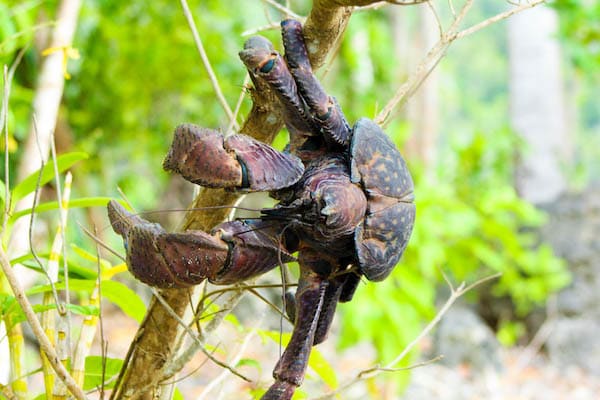
Tomolo
AM: A swim through Tomolo’s mysterious dome-topped cave is undoubtedly one of Raja Ampat’s most memorable activities. After an early breakfast, our tenders will take us into the heart of the bay to see this partially submerged cave where it is possible to swim, snorkel or simply float while gazing up at the cavernous grotto adorned with astonishing stalactites.
The more adventurous can swim or paddle through the dark waters to the other mouth of the cave. We will then move on to the mysterious stingless jellyfish lake, one of only 20 in the world where these amazing creatures exist and swim amongst the many thousands of stingless animals.
PM: After returning to the ship, we will use our tenders to explore more of this impressive maze of karst islands, both above and below the surface, complete with mysterious skull cairns in sea-cave cemeteries, and prehistoric ‘petroglyph’ cave paintings, estimated to be anything from 3,000 to 5,000 years old and depicting various human figures and huge human palms, fish, flowers and plants, tools and vessels.
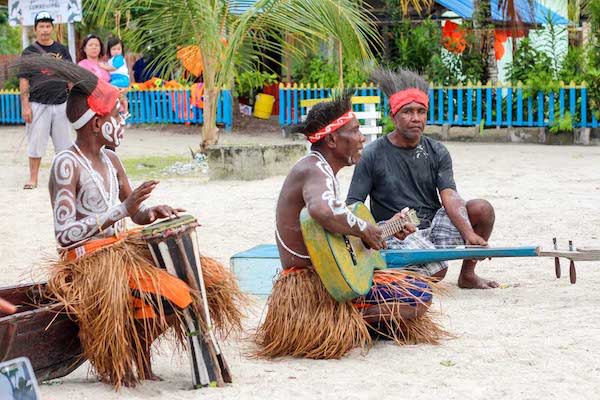
Sapokren Village
AM: Waking before dawn we will be ferried to a local village, where local guides will take us on a trek through the jungle in the hope of finding the beautiful Wilson’s Bird of Paradise perform is mating dance ritual upon the forest floor. On our way back to the boat we will be accompanied by the sounds of the jungle coming to life and we will be sure to spot a number of bird species along the way.
PM: After a well-earned late breakfast, we will spend the remainder of the day enjoying snorkelling, swimming and exploring the reefs and islands of the local area by kayak and paddle board.
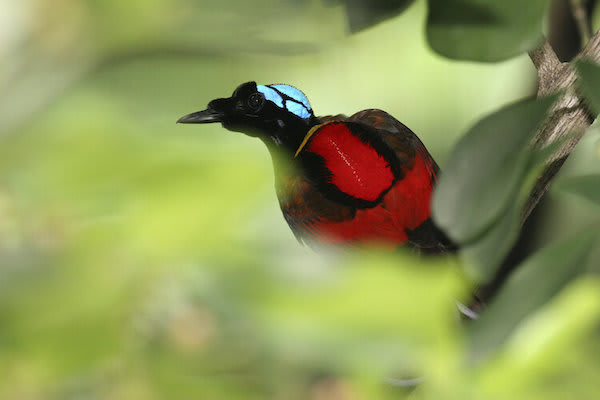
Dampier Strait, Aborek Village
AM: Today we will follow in the footsteps of the ‘father of biogeography,’ Alfred Russel Wallace by rising early and walking into the forest on a pre-dawn quest to spot the remarkable red bird of paradise, one of the species that Wallace was most anxious to collect. With a little luck and the help of our knowledgeable guides, we might catch sight of this rare bird’s elaborate courtship display as dawn breaks over the forest canopy.
PM: After returning to the ship, we will turn our attention from the sky to the sea as the Ombak Putih makes her way through the Dampier strait, home of some of Raja Ampat’s premier reefs. If the currents are in our favor, we might see some of the area’s larger specimens of marine life, which are attracted to the strait’s nutrient-rich waters. We will end the day by mooring off Pulau Arborek in front of Arborek Village. Here, we can easily circumnavigate the tiny island by foot and gain a sense of the Asai culture, which is still kept alive by the villagers living in this isolated place.

Disembarkation
AM: In the morning, we will find ourselves at anchor in the harbor of Sorong. After a final, hearty breakfast, we will say goodbye to the Ombak Putih and her crew.
Our crew members will take you ashore for your transfer to the airport for your onward travel.

Embarkation
AM: We will take an early morning flight from Bali to Labuanbajo, the gateway to the Komodo National Park. Back on the boat, we will head out into the National Park to Kalong Island for our first snorkel of the trip.
PM: At dusk, we will gather on the back deck at cocktail hour to see the sunset and witness the evening departure of tens of thousands of fruit bats as they leave their forest homes to forage on the mainland.

Rinca Island
AM: We enjoy an early breakfast and go ashore to Rinca Island, where we will have a walk through the local village with a visit to a local bat cave. We will then cruise to the richly diverse reefs of Siaba Besar Island, where we will snorkel with thousands of fish and the many sea turtles that congregate in the area.
PM: After lunch, spend a leisurely afternoon at a beach swimming, snorkeling, paddle boarding, and kayaking. Later that evening we will move to the main bay of Komodo Island and spend the night at anchor.

Komodo Island
AM: We will go ashore onto Komodo Island for an early morning, ranger-led walk through the dry, rugged landscape of the island encountering wildlife along the way.
PM: After lunch, we will go in search of manta rays to snorkel with these mighty creatures. We will have our day’s second snorkel in the north of the park, with the chance to watch the sunset from a hilltop vantage point, before heading off on our long overnight cruise to the east to the Riung Conservation Area.

Riung Conservation Area
AM: Today we explore the beaches and the underwater world of the 17-Island, Riung Conservation Area, home to myriad species of land animals and rich coral reefs, as the Ombak Putih moves from island to island throughout the day. Enjoy swimming, paddle boarding, kayaking, snorkeling, and relaxation.
PM: At around sunset we will head east in the direction of Maumere.
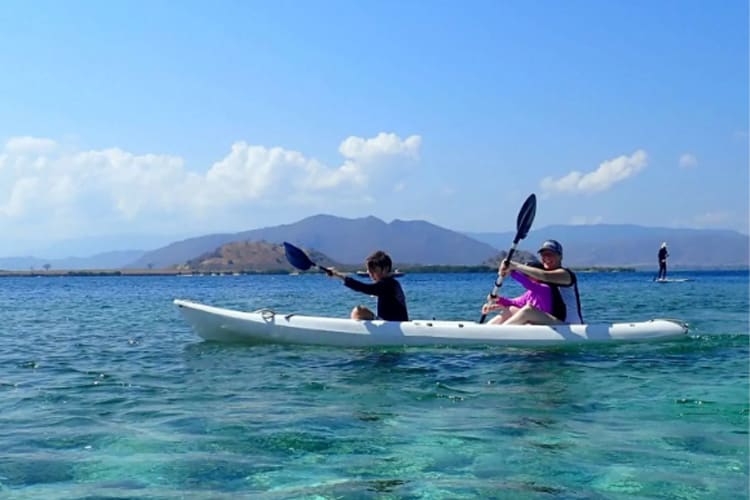
Maumere
AM: Wake up at anchor in Maumere Bay against the backdrop of an extinct volcano and enjoy a leisurely breakfast before the day’s activities begin. Take a short drive to the scenic Iwang Gete highlands to visit the small village of Watublapi, where we will be met with singing and dancing by the local people. Famed for their unique textiles, we will be shown firsthand their ancient techniques of spinning, dyeing, and weaving their famous fabrics. Here we will have the chance to view (and purchase) some of the local textiles, try their betel nut, and brave their locally produced liquor.
PM: In the late afternoon we will head off for an overnight cruise to Solor Island

Solor - Adonara
AM: In the morning, we will visit the ruins of a 16th-century Portuguese fort on Solor, a reminder of the ancient spice trade.
PM: During lunch, we will cruise through the beautiful passage between the islands and volcanoes we had northeast of Adonara where we will go snorkeling. Later that afternoon we head north in the direction of the uninhabited, active volcanic island of Komba.

Komba Volcano - Lewaling Bay - Ile Ape
AM: After breakfast, we will explore the (hopefully) belching Komba volcano with our dinghies, and go for a snorkel on the surrounding reefs. Late morning we will head south and cruise towards the mainland and the beautiful Lewaling Bay.
PM: Later this afternoon we will go ashore and drive to a local village to see some prehistoric rock art. Later that afternoon we will snorkel and see the sunset over Ile Apé, another active volcano. After dinner, the boat will head east in the direction of Pura Island.
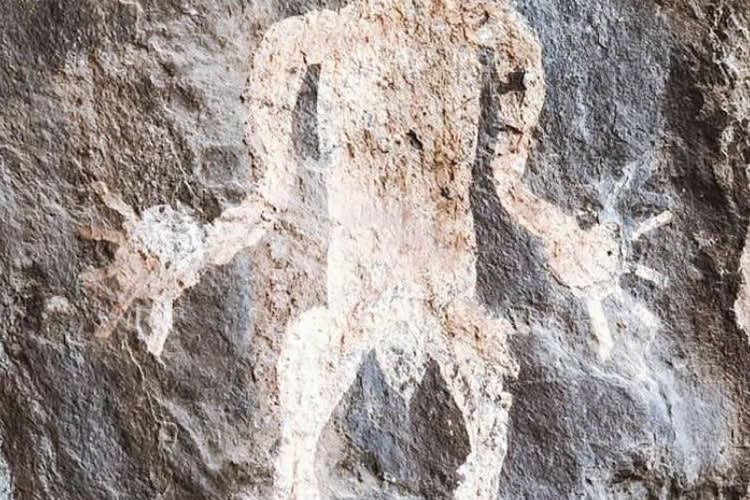
Life at Uma Pura
AM: After breakfast, we will snorkel Buaya Island, a location with a beautiful drop-off and lots of fish.
PM: In the early afternoon we will visit the ancient Muslim village of Uma Pura, where we will stroll around, meet the people and see their way of life. The village is well known for using sea sponges for the dying of their textile, and we will get a chance to see the process in action. After Umapura village we will head to a local reef and go snorkeling. We will then head to the capital of Alor, Kalabahi.
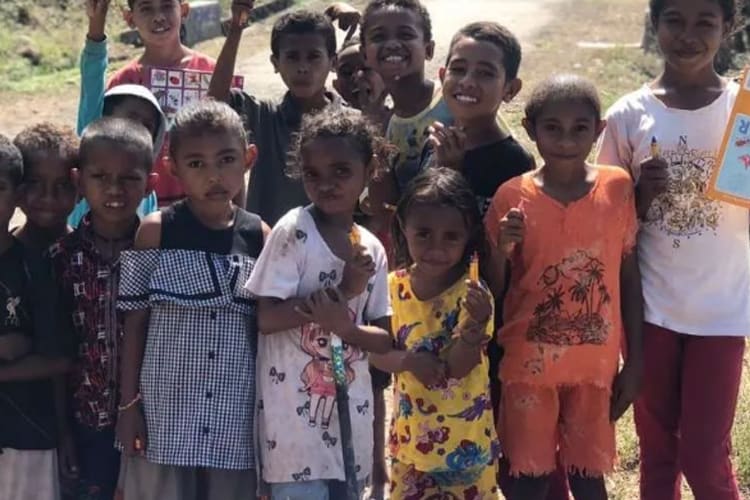
Visit Village & See The Dugong
AM: After breakfast, we will visit the traditional village of Takpala, where we will be greeted by traditional dancing. We will also visit the local market to see the activity there. If you are lucky you can see people buying Moko, the traditional bronze drums of Alor.
PM: Later this afternoon we will go with a local boat to see the dugong, followed by a relaxing afternoon on the beach before heading to the boat for our farewell dinner.

Disembarkation
AM: We wake up in a beautiful bay on the island of Alor where we will have breakfast before saying goodbye to all crew and heading to the airport for our morning flight back to Bali.

Embarkation
AM: You will be collected from your hotel in the morning and taken to the boat.
PM: After lunch, we will visit Takpala village for a fascinating cultural performance. Later this evening we will head west to Pura Island, where we will spend a quiet night at anchor.
Note :
Because of the flight schedules to Alor from Bali, guests must fly to Alor the day before the journey and stay in a local resort for one night. This overnight stay is included in the ticket price and will be booked by us on your behalf.

Clown Valley & Buaya Island
AM: After breakfast, we will snorkel at Clown Valley, home to many sea anemones and their resident guardian clownfish.
PM: In the early afternoon we will have a second snorkel at Buaya Island, a location with a beautiful drop-off and lots of fish.
We will then head to a local quiet bay to spend the night at anchor.
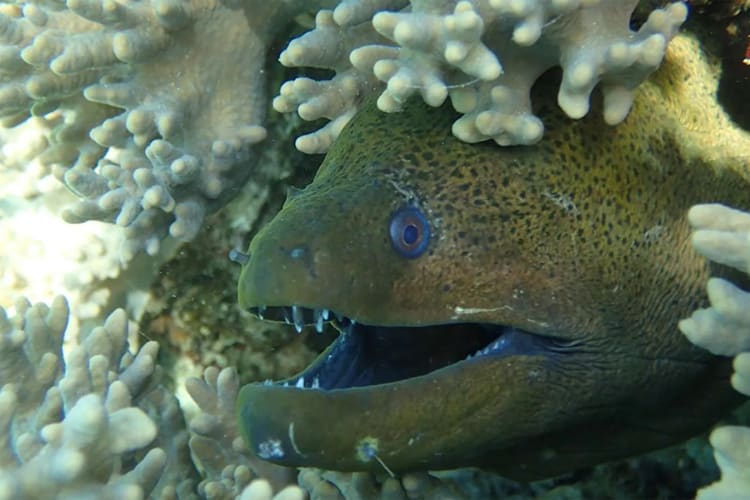
The Village of Uma Pura
AM: After breakfast, we will visit the ancient Muslim village of Uma Pura, where we will stroll around, meet the people and see their way of life. The village is well known for using sea sponges for the dyeing of their textile, and we will get a chance to see the process in action.
PM: After this, we will head to a local reef and go snorkeling. After dinner, we will depart to the uninhabited active volcanic island of Komba.

Komba Volcano - Lewaling Bay - Ile Ape
AM: After breakfast, we will explore the (hopefully) belching Komba volcano with our dinghies, and go for a snorkel on the surrounding reefs. Late morning we will head south and cruise towards the mainland and the beautiful Lewaling Bay.
PM: Later this afternoon we will go ashore and drive to a local village to see some prehistoric rock art. Later that afternoon we will snorkel and see the sunset over Ile Apé, another active volcano. After dinner, the boat will head east in the direction of Adonara.

Adonara - Solor Island
AM: In the morning we will explore the beautiful underwater reefs on the northeast of Adonara island.
PM: We will head to Solor Island as we have lunch, enjoying the beautiful views of the volcanos and islands of this stunning inland passage. We will visit the ruins of a 16th-century Portuguese fort on Solor, and later that afternoon we will head off on an overnight cruise to Maumere.

Maumere
AM: We wake up at anchor in Maumere Bay against the backdrop of an extinct volcano and enjoy a leisurely breakfast before the day’s activities begin. We will take a short drive to the scenic Iwang Gete highlands to visit the small village of Watublapi, where we will be met with singing and dancing by the local people. Famed for their unique textiles, we will be shown firsthand their ancient techniques of spinning, dyeing, and weaving their famous fabrics. Here we will have the chance to view (and purchase) some of the local textiles, try their betel nut, and brave their locally produced liquor.
PM: In the late afternoon we will head off to the Riung conservation area.
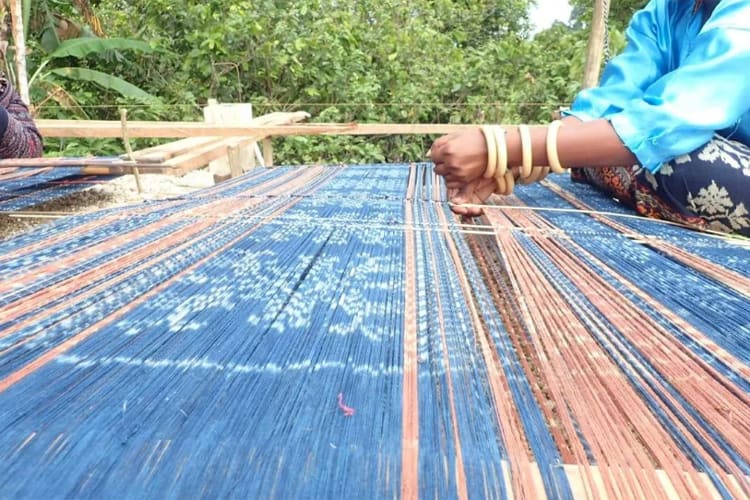
Riung Conservation Area
AM: Today we explore the beaches and the underwater world of the 17-island, Riung Conservation Area, home to myriad species of land animals and rich coral reefs, as the boat moves from island to island throughout the day. Enjoy swimming, paddle boarding, kayaking, snorkeling, and relaxation throughout the day.
PM: At around sunset, we will head east in the direction of the Komodo National Park.
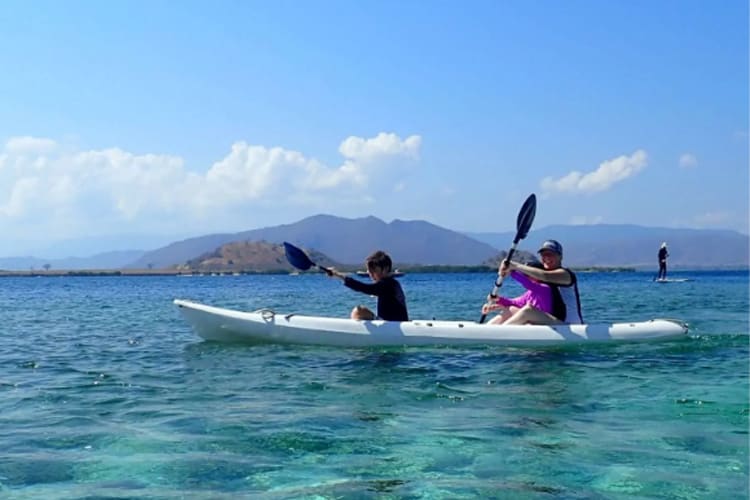
Komodo National Park
AM: Today we are already in the Komodo National Park, and after breakfast, we will have fabulous snorkeling at the area of Hatamin Island, home to many baby sharks and beautifully restored coral gardens.
PM: After snorkeling, we depart to Rinca island, where we will have an afternoon walk through the local village with a visit to a local bat cave. At dusk, we will gather on the back deck at cocktail hour to see the sunset and witness the evening departure of tens of thousands of fruit bats as they leave their forest homes to forage on the mainland.

Komodo National Park
AM: We will go ashore onto Komodo Island for an early morning, ranger-led walk through the dry, rugged landscape of the island encountering wildlife along the way.
PM: After lunch, we will go in search of manta rays to snorkel with these mighty creatures. We will have our day’s second snorkel in the north of the park, with the chance to watch the sunset from a hilltop vantage point, before spending a quiet night at anchor.

Disembarkation
AM: After breakfast, we will go ashore to see the ‘caci’ dance, a traditional cultural performance of the Manggarai people. Later in the morning, it will be time to say goodbye to the crew and your fellow shipmates and head to the airport for the flights back to Bali.

Embarkation
Embark on an extraordinary adventure as we present our highly anticipated Reposition Cruise with Dr. George Beccaloni, set to sail on a specific date. Get ready to redefine your cruising experience with a unique itinerary designed to captivate your senses and create lifelong memories.
PM: Your flight arrives on the small island of Ternate, the capital of the North Maluku Province. You will be met at the airport and transferred to the stately Ombak Putih, moored off Ternate City. There will be time for you to get settled into your rooms, have a quick safety briefing, and enjoy an alfresco lunch while meeting the other passengers and the crew.
In the afternoon we will venture into the city, which has retained its commercial and political importance as the administrative and trading center of North Maluku. Of the four historically powerful spice sultanates, Ternate is the only one where the sultanate has survived uninterrupted.
We will visit Fort Toluko built by the Portuguese and the ‘Kedaton', the palace of the Sultan, with its rich collection of heirlooms. We will also see the impressive Fort Oranje built by the VOC (Dutch East India Company) and the probable site of the house where Wallace was living when he posted his essay on natural selection to Charles Darwin in 1858. After our tour, we will move back to the boat ready to start our journey.

The Coast of Halmahera
AM: Today we will wake up off the coast of Halmahera, just across from Ternate, with the mighty peaks of Ternate and Tidore as our dawn backdrop. After breakfast we will head to the village of Dodinga: the very place where Wallace was living when, in a fit of malarial delirium, he discovered the mechanism which drives evolutionary change - natural selection. Once he had recovered, he promptly wrote a detailed essay explaining his theory, which he posted to Charles Darwin as soon as he returned to his base on Ternate. His essay, which was published together with Darwin's thoughts on the subject in August 1858, prompted Darwin to publish his book Origin of Species in 1859, which explained the theory in greater detail. Dodinga is a pretty little riverside village with friendly people, colorful houses, and the ruins of an old Portuguese fort, and its importance in the history of science cannot be understated.
PM: After spending some time with the villagers, sharing some fresh coconuts, and enjoying their hospitality, we will head back to the boat for lunch and then go off for an afternoon of snorkeling and relaxation. We will head south later in the day ready for our first Bird of Paradise encounter the following morning.

The Guarici Archipelago
AM & PM: Today we will visit the Guarici Archipelago, a chain of islands with white sandy beaches, vibrant coral reefs, and some lovely local villages. We will spend a full day here snorkeling, swimming, and paying a visit to one of the villages to meet the local people.
The islands are part of a government-controlled conservation area, designed to protect the reefs and the many beautiful marine species that live there.
These protected waters also provide the perfect location for beginner or rusty snorkellers to become familiar with the water and to home their skills for the many days of snorkeling that lie ahead.

Indonesia's Historic Spice Sultanates
AM: We will wake up off the western coast of Bacan, another of Indonesia’s historic spice sultanates. We go ashore to explore the forested slopes where Wallace made some of his greatest zoological discoveries, including the Moluccan Cuscus, the Standardwing Bird of Paradise, the world's largest bee Megachile pluto, and the huge and magnificent Golden Birdwing Butterfly. Wallace described the latter species as the "finest butterfly in the world". When he caught the first male in 1859 he wrote: "When I took it out of my net and opened its gorgeous wings, I was nearer fainting with delight and excitement than I have ever been in my life; my heart beat violently, and the blood rushed to my head, leaving a headache for the rest of the day." Very few Westerners have ever seen this species alive and no groups of tourists have ever been taken to see it before. Of course, there is no guarantee we will see it - but we will try very hard and will be employing as our guide the one person on Bacan who knows exactly where it can be found.
PM: We will also keep a close watch for these and a host of other animals, some of them endemic to these islands, including parrots, cockatoos, lorikeets, hornbills, the elusive cuscus, and the endangered black macaque – the only monkey in Maluku. It’s the wrong side of the Wallace Line for monkeys; these ones were introduced hundreds of years ago by North Sulawesi.

The Tiny Gems Islands
AM & PM: In the morning we make landfall at the Pisang Islands. These tiny gems isolated in the vast waters of the Ceram Sea offer us a chance to relax and enjoy the sparkling white-sand beaches, clear waters, and vibrant reefs before making our way to the shores of West Misool.

The Lesser Birds of Paradise
AM: Today we will try our best to see the Lesser Birds of Paradise displayed in the wild, an unforgettable experience for anyone lucky enough to see them. We will rise around 4 am and have a quick breakfast and go ashore, where local guides will be waiting for us to take us through the forest to hopefully see the birds as they dance around in their ‘lekking’ (courtship display) trees. We can make no guarantees, however, as we do not have them on a leash.
PM: We will have time for a look around the village and possibly a visit to the school and to learn about their way of life. Mid-afternoon we will set off to the eastern side of Misool to Tomolol Bay.

Exploring East Misool
AM: This morning we will wake to see the sun rise over the picturesque chain of islands that makes up the eastern part of the Misool archipelago. The topography is typical of ‘karst dissolution’ featuring a great number of tiny islets whose bases have been eroded over time by the relentless motion of the tides.
After an early breakfast, our tenders will take us into the heart of the bay to see this partially submerged cave where it is possible to swim, snorkel or simply float while gazing up at the cavernous grotto adorned with astonishing stalactites. The more adventurous can swim or paddle through the dark waters to the other mouth of the cave.
PM: We will then move on to a mysterious jellyfish lake and swim amongst the many thousands of stingless animals: undoubtedly one of Raja Ampat’s most memorable activities. After returning to the ship, we will use our tenders to explore more of this impressive maze of karst islands, both above and below the surface, complete with mysterious skull cairns in sea-cave cemeteries, and prehistoric cave paintings, estimated to be anything between 3,000 to 5,000 years old and depicting various human figures and huge human palms, fish, and plants, tools, and vessels.
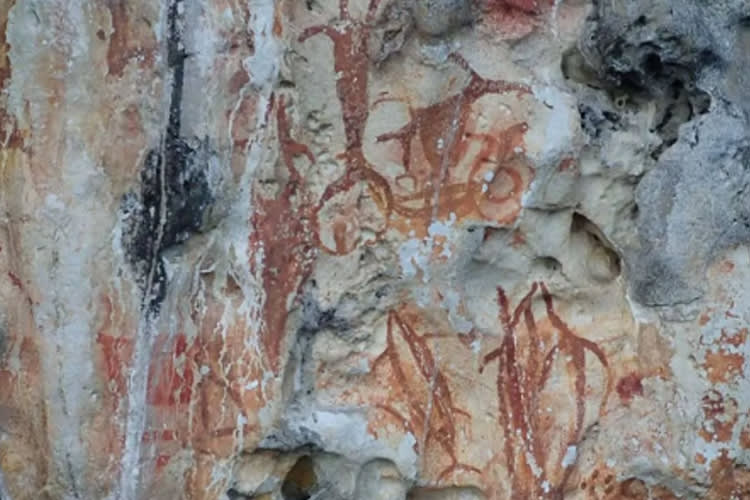
Adventurous Trek into Island
AM: After our days of marine exploration, the jungle-clad island of Batanta offers us a change of scenery and a chance to stretch our legs on an adventurous trek into the island’s interior. We anchor at the foot of Arefi Village, nestled on the north coast of the island, here we can visit the village and the school, and watch the children’s performance.
PM: For those who wish, IF THE TIDE IS RIGHT we will be able to take a short walk along the riverbed brings us to the first of two jungle waterfalls complete with a refreshing pool for cooling off. The fit and adventurous may choose to continue the uphill climb along the rocks to where a second, larger cascade awaits. After this, the boat will move to Dayang Island for another great snorkeling opportunity.

Villagers Living
AM: We will wake up in front of the island of Penemu, a dramatic location with a short hilltop climb to take in the amazing views. After some great snorkeling on the island’s reefs, we will set the course for the tiny Arborek Island, where the local children will perform their traditional dances for us.
PM: We can also walk around the village and gain a sense of the Asai culture, which is still kept very much alive by the villagers living in this isolated place. There's a chance that we may get to see some manta rays as we snorkel, but there are no guarantees.

Remarkable Paradise
AM: Today will present another opportunity for keen naturalists, as we rise early and walk into the forest on a pre-dawn quest to spot the remarkable Red Bird of Paradise, one of the species that Wallace was most anxious to collect. With a little luck and the help of our knowledgeable guides, we will see this rare bird’s elaborate courtship display as dawn breaks over the forest canopy.
After returning to the ship, we will turn our attention from the sky to the sea as the Ombak Putih makes her way through the Dampier Strait, home of some of Raja Ampat’s premier reefs. If the currents are in our favor, we might see some of the area’s larger specimens of marine life, which are attracted to the strait’s nutrient-rich waters.
PM: We will spend the afternoon in Yenbeser village where Wallace spent some months and (if the tides are right) we’ll visit a faithful replica of Wallace’s small hut, which was built by the villagers using plans from FFI (Fauna & Flora International) and a grant from SeaTrek.
We will also visit a nearby small island where a local man has set up a coconut crab 'sanctuary'. The island is home to a small number of these monsters (Birgus latro, the world's largest terrestrial arthropod), and you can get up close and personal with these magnificent yet docile beasts. Another late afternoon snorkel along a reef with some spectacular giant clams (the world's largest bivalve) will lead us into dinner at anchor on board, ready for an early morning venture for the Red Bird of Paradise.

Island Hopping
AM & PM: Today we will rise at 4.30 am, off Saporkren village. The dinghy will carry us across to the village in the dark and a local guide will take us on a short drive into the forest on a pre-dawn quest to spot the gorgeous Wilson’s Bird of Paradise. We hope that the efforts of our early start will pay off, enabling us to catch a rare and privileged sight of the bird’s elaborate courtship dance as the day breaks over the forest canopy.
Back in the village, there will be time to meet with the community and perhaps visit the school. We will be back on the boat by mid-morning and we will head to Yenbuba at Mansuar Island for some snorkeling before lunch. This place is known as the ‘fish bowl’ because of the chance to see different types of fish around the bay. The boat will then move to Mioskon Island for more snorkeling and the opportunity to watch a multitude of bats flying overhead just after sunset. Tonight we will have a farewell party.

Disembarkation
AM: Today is the end of our adventure, but there is still one last chance for a swim and a snorkel at a small offshore island before we cruise into the port. Alternatively, we can explore Doom Island.
Once at anchor we will say goodbye to George, our crew, and our sea-based home, the Ombak Putih before taking the tenders ashore where you will be transferred to the airport for your onward travel.

Embarkation
AM: You will be picked up by your tour leaders at your Maumere hotel and taken directly to the boat, where you will meet your fellow passengers and crew. After settling in, we will head back to shore and take a short drive to the scenic Iwang Gete highlands to visit the small village of Watublapi, where we will be met with singing and dancing by the local people. Famed for their unique textiles, we will be shown firsthand their ancient techniques of spinning, dyeing, and weaving their famous fabrics. Here we will have the chance to view (and purchase) some of the local textiles, try their betel nut, and brave their locally produced liquor.
PM: Back on the boat for lunch, we will cruise out of the harbor and head off to the east, giving you a chance to become familiar with your new home for the next 12 days, stopping for a snorkel and a swim along the way, before sunset cocktails and dinner as we cruise on into the night.

Maumere
AM: After breakfast we will explore the (hopefully) belching Komba volcano with our dinghies and go for a snorkel on the surrounding reefs. Late morning we will head south and cruise towards the mainland and the beautiful Lewaling Bay.
PM: Later that afternoon, we will snorkel and watch the sunset over Ile Apé, another active volcano. After dinner, we will make the overnight crossing to Alor.

Alor
AM: After breakfast we will head to shore and board some local boats to visit with Mawar, a friendly but wild dugong who lives in the seagrass beds of the nearby bay. We will also get to meet by “local hero”, Pak Ono, who ensures that Mawar is well protected.
PM: In the afternoon we will pay a visit to Umapura, a village famed for its weaving and dying industry, where we can see how the local women create their intricate ikat cloth. There is every chance to purchase some as a memento. Later we will go for a great snorkel on a nearby reef, before cruising to our next destination to spend the night at anchor.

Traditional Village of Takpala
AM: Today we visit the traditional village of Takpala up in the hills, of Alor where we will be welcomed by the chief and witness a ceremonial war dance in honor of our visit. We will see their traditional ‘Moko’ war drums and intricately designed ‘Ikat’ fabrics, which have been woven and dyed using age-old techniques, and used in local bridal dowries for centuries.
PM: Around midday we will weigh anchor and cruise east as we enjoy lunch on board, stopping in the late afternoon at a picturesque tropical island to snorkel and swim on a coral reef. We will then head east as we continue our journey into the night.

Wetar Island
AM: We will wake up in a lovely bay on Wetar Island and go ashore to a local fishing village to meet the locals and see their way of life as they dry their catch on the beach. Spend the day swimming and beaching, snorkeling and exploring, and indulge in a bit of local culture by way of ‘sopi’, a strong alcoholic drink made from a local palm tree.
PM: Later in the afternoon we will weigh anchor and continue our journey east.

Wetar Island
AM: This morning, we will go ashore on a small island and be welcomed into a remote village where the locals will share with us their way of life as farmers and fishermen.
PM: After lunch we will continue cruising, stopping off at another tiny island, this one deserted, to swim, kayak, snorkel over the reef and relax on the sand. This evening the crew will set up for a beach BBQ and we will dance and sing our way into the night before heading off again for an overnight cruise to our next destination.

Remotest Parts of Indonesia
AM: Today is another day of cruising and exploring in one of the remotest parts of Indonesia. We will visit a very simple village where the people’s houses are made using the products of the sago palm, the staple crop in this part of the world. The villagers will demonstrate to us how they process the heart of the sago palm into the edible product that sustains them.
PM: After lunch, we will cruise around the island and stop off to explore the beaches and reefs, where we will snorkel along the way.

The Ring of Fire
AM: Today will be a day at sea where we will pass four spectacular volcanic sea mounts, explicit examples of Indonesia’s place along the Ring of Fire.- One of these islands is uninhabited by people and is home to tens of thousands of sea birds, (brown and red-footed boobies, and frigate birds), who will likely come out to encircle the boat in great numbers on our approach. If the tide allows, we will go ashore and investigate and surely have a snorkel.
PM: In the late afternoon, we will proceed north to the fabled Spice Islands.

The Spice Islands
AM: By dawn, we should have the Banda Archipelago ‘Spice Islands’ in our sights, the original home of the nutmeg and the scene of much bloodshed between the colonial powers of Europe in the 15th and 16th centuries over control of the spice trade. We will go ashore and go ashore and visit Fort Revenge, built by the Dutch, before snorkeling on the local reef.
PM: Later we will head across to the main island group, and the main town, and anchor in the beautiful enclosed anchorage under the imposing gaze of a 600-meter-high volcano. If we get there enough time before nightfall, we will go ashore and explore the town.

The History & Beauty of Spice Islands
AM: Today is a day of exploring the history and beauty of the Spice Islands with a visit to the main town of the Spice Islands and its fort overlooking the harbor. We will wander through the streets and markets of this bustling town and meet the local people. After lunch on the boat we will take a local boat over to the biggest of the islands, where we will walk among the vast nutmeg plantations, visit another Dutch fort, talk with the locals, and visit one of the last ‘perkineers’, the farmers who still run the larger plantations on the island who will tell us about life on the islands.
PM: Later in the afternoon we can snorkel on a local reef and have a chance to see the rare and multi-hued Mandarin fish, which only comes out at dusk to mate. Dinner will be had ashore at a local restaurant that offers traditional and delicious local dishes.

Farewell to Spice Island
AM: This morning we have time for a final stroll around the town or a last snorkel before we say farewell to the Spice Islands around lunchtime and head north.
PM: We will have lunch on the way, passing another major seabird island, before settling in for a relaxing afternoon on board as we scour the horizon for migrating whales.

Disembarkation
AM: We will wake up just south of our final destination and our last few hours will be spent enjoying the majesty of the ocean, and we may very well see more whales along the way. As we drop anchor in the harbor, we will say farewell to our crew and tour leaders and be taken to the airport for our onward journeys, ending a magical 12 days of exploration and adventure.

Embarkation
Embark on an extraordinary adventure as we present our highly anticipated Reposition Cruise with Dr. George Beccaloni, set to sail on a specific date. Get ready to redefine your cruising experience with a unique itinerary designed to captivate your senses and create lifelong memories.
AM: Ambon town is one of the oldest European outposts in the region and in Wallace's time it was the capital of the Moluccas. Wallace collected some stunning species on the island and said that it "...always remain as a bright spot in the review of my Eastern travels since it was there that I first made the acquaintance of those glorious birds and insects, which render the Moluccas classic ground in the eyes of the naturalist, and characterize its fauna as one of the most remarkable and beautiful upon the globe." Upon arrival at the airport, cars will take you to the Ombak Putih at her mooring in the harbor. After you have settled in and freshened up, we will go on an (optional) short tour of the island. We will visit the market and see a traditional Balieo house. Also on our tour will be the ancient Waipauwe Mosque (1414), the Immanuel Church (1512), and finally Fort Amsterdam (1514), one of the first European forts built in the Moluccas. Rumphius, an important German botanist, lived in the fort from 1660 to 1670 and we will see copies of some of his psychedelic paintings of local brightly colored fish.
PM: After this, we will return to the boat for lunch before heading out on our way to the Banda Islands

Banda Islands
AM: Today we will reach the remote and legendary Banda Islands. Famous for their natural beauty and cultural heritage, and the well-preserved remnants of an extraordinary history of imperialist rivalry, these islands are quite simply one of Indonesia’s highlights. Banda was originally the world’s only source of nutmeg and mace, valued for their rarity and high cost by aristocrats and elites.
This is a very special destination. Since conditions of wind and tide will determine the order in which we visit various Banda islands, our activities here can’t be assigned to a particular day. Here’s what we aim to cover. In the capital Bandaneira, on the biggest island, Neira, we land near the elegant arches of Hotel Maulana – a little slice of Somerset Maugham. It’s a pleasant stroll through the quaint colonial outpost’s characterful streets, inspecting notable residences, a museum, churches and a waterfront market. Brooding overall is the mediaeval-looking Fort Belgica, its five crumbling bastions now solidly rebuilt. The population is a handsome mix of Malay, Arab, Dutch and Melanesian. Just across the harbour is Banda’s perfect, jungle-clad volcanic cone Gunung Api (‘Fire Mountain’ – 640 metres). The fit and ambitious might make an early morning ascent up a challenging track to the top for stunning views.
PM: There are some excellent coral reefs nearby and we should see some amazing marine life whilst snorkelling. Ironically, in the less-than-pristine waters of the harbour, we have a good chance of seeing (at dusk) arguably the world's most stunning fish, the small but jewel-like Mandarin Fish.

Banda Archipelago
AM & PM: We choose from some of the other small islands of the Banda archipelago – Lonthoir, Ai, Run, Hatta – each of them with its own remnants of old plantations, Dutch cemeteries, and fortifications. The tiny outlying island of Run was the subject of an unbelievable real estate deal when in 1667, under the Treaty of Breda, it was ceded by the English to the Dutch in exchange for Manhattan. Yes, The Manhattan where New York stands.
On the island of Ai, we can visit Fort Revenge, built by the English before being captured by the Dutch. On Lonthor we will enjoy the tranquil beauty of nutmeg groves, where the shapely fruit-bearing trees grow in the shelter of towering, gigantic kenari or native almond trees. With any luck, we will spot the Elegant Imperial Pigeon, a species Wallace discovered and named, which can swallow nutmegs whole. We will observe the age-old technique of harvesting by hand and can taste (and buy) baked goods, condiments, and jams flavored with fresh mace and nutmeg. The fruit enclosing the nutmeg seed is sold dried and has a unique and intense flavor. It is a delicacy rarely obtainable outside the Banda Islands.

Banda Archipelago
AM & PM: We will also climb up to fortress Hollandia and go on to meet the last of the ‘perkeniers’ – the small-holder farmers who managed the plantations for the Dutch, on land parcels known as ‘perken’. You’ll learn of more recent wars and eruptions that shook these lovely islands, and value, even more, their current peace and tranquillity.
Leaving Banda we will navigate through the Sonnegat (‘Sun’s gap’) between Neira and Gunung Api, possibly escorted by kora-kora – the big Moluccan galleys used traditionally for ceremony and warfare, propelled by banks of warrior-oarsmen.

Saparua
AM: On Saparua we land beside Dutch Fort Duurstede (1691), stormed in 1817 in a revolt led by Ambonese Kapitan Pattimura, a national hero and martyr. His story is told by vivid museum dioramas. Brightly painted bemo mini-buses will take us to a morning market before we sail to nearby Nusalaut. Rarely visited by outsiders, this island is home to a Christian community after early missionaries planted their faith here at the same time that Islam was spreading through the archipelago. We will visit the Eben-Haezer church founded in 1719. Nearby is the restored Dutch Fort Beverwyck, built-in 1657 in a distinctive architectural style we’ve not yet encountered.
PM: A highlight here is a lunchtime feast of wonderful local dishes – freshly prepared by villager hosts from forest, garden, and sea produce. It’s your once-in-a-lifetime opportunity to try papeda, the most famous and unusual of the many sago dishes in this region. Our next destination is the Island of Manipa.

Manipa Island
AM: Manipa Island is said to have magical powers, because none of the Portuguese, Dutch, or WW2-Japanese who occupied the surrounding islands ever landed here. The spell doesn’t apply to Indonesian ships, so we land at Uwe township for lessons in village technology. Its gardens produce cashews, while the leaves of forest Melaleuca cajuputi are pot-distilled to make a volatile oil called kayu putih or cajeput. It’s famed throughout Indonesia as a universal panacea: cosmetic, antiseptic, insecticide, decongestant, analgesic, expectorant, anti-spasmodic, stimulant, and tonic.
PM: We also view the production of the traditional Moluccan food staple, sago, a nutritious flour washed from the fibrous trunk of the sago palm. Sago can be baked into easily transportable dry cakes, which Wallace often subsisted on, while the palm also provides building material and thatch. After an afternoon of snorkeling, we will cruise on toward Belang-Belang.

From White Sand to Picturesque Channels
AM: Deserted, white-sand Belang-Belang is a real beachcomber’s paradise, where we can launch our full flotilla of watercraft, kayaks, and paddle boards. At Obi Latu, mountains clad in forest and clove plantations plunge spectacularly into the sea. We will visit isolated Manatahan, a village of migrant Butungese from Sulawesi hundreds of miles to the west. Migration is not unusual in this island world where people are accustomed to moving by boat, and islands are sparsely populated or uninhabited. In past times the picturesque channels around Obi were dotted with the sails of local spice traders, Portuguese caravels, Spanish galleons, Dutch yachts, and English pinnaces.
PM: Now we encounter friendly fishers and their outrigger dugouts, colorful timber island-trading craft, and sometimes little Lambo sloops still trading under sail.

Patinti Strait & Doworalamo
AM: By today you will have lost track of time and place, but your crew won’t have. They will have delivered you on schedule to the Patinti Strait and Doworalamo, where we visit a village of the famous sea gypsies, known in Eastern Indonesia as Sama-Bajo. Scattered widely through South-East Asia, sea gypsies spent their entire lives from birth to death on their small sailboats called lipa-lipa. Now the modern world has pushed them ashore. Landless, their homes are always built on stilts over coral reefs or the tidal margins of remote islands such as this one.
PM: We will also have opportunities for swimming, snorkeling, and beach-combing before our ship continues on its northerly course.

Bacan Island
AM: We will wake up off the western coast of Bacan, another of Indonesia’s historic spice sultanates. We go ashore to explore the forested slopes where Wallace made some of his greatest zoological discoveries, including the Moluccan Cuscus, the Standardwing Bird of Paradise, the world's largest bee Megachile pluto, and the huge and magnificent Golden Birdwing Butterfly.
Wallace described the latter species as the "finest butterfly in the world". When he caught the first male in 1859 he wrote: "When I took it out of my net and opened its gorgeous wings, I was nearer fainting with delight and excitement than I have ever been in my life; my heart beat violently, and the blood rushed to my head, leaving a headache for the rest of the day." Very few Westerners have ever seen this species alive and no groups of tourists have ever been taken to see it before. Of course, there is no guarantee we will see it - but we will try very hard and will be employing as our guide the one person on Bacan who knows exactly where it can be found.
PM: We will also keep a close watch for these and a host of other animals, some of them endemic to these islands, including parrots, cockatoos, lorikeets, hornbills, the elusive cuscus, and the endangered black macaque – the only monkey in Maluku. It’s the wrong side of the Wallace Line for monkeys; these ones were introduced hundreds of years ago by North Sulawesi.
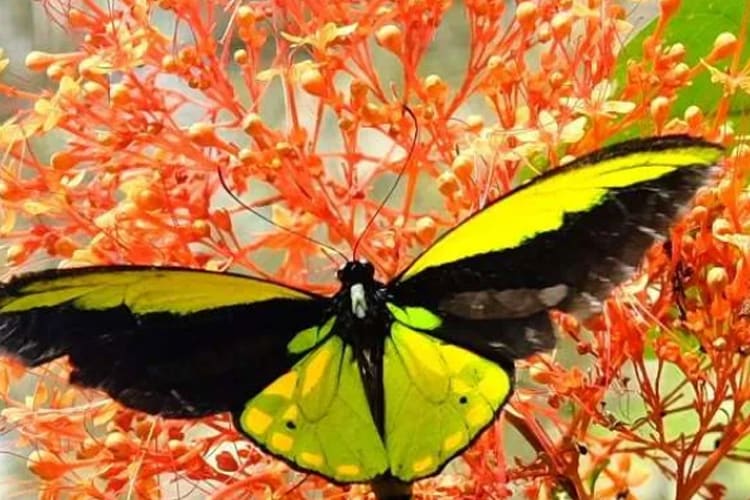
Guarici Archipelago
AM & PM: Today we will visit the Guarici Archipelago, a chain of islands with white sandy beaches, vibrant coral reefs, and some lovely local villages. We will spend a full day here snorkeling, swimming, and paying a visit to one of the villages to meet the local people. The islands are part of a government-controlled conservation area, designed to protect the reefs and the many beautiful marine species that live there.

Halmahera
AM: Today we will wake up just across from Ternate off the coast of Halmahera, with the mighty peaks of Ternate and Tidore as our dawn backdrop, ready to head ashore to the village of Dodinga after breakfast. This is the very place where Alfred Russel Wallace was staying when, in a fit of malarial delirium, he came up with the idea for the mechanism for evolutionary theory. He promptly wrote to Charles Darwin when he recovered and set in motion the formalization of the theory of Evolution by Natural Selection. Dodinga is a pretty little riverside village with friendly people, colorful houses, and the ruins of an old Portuguese fort, and its importance in the history of science cannot be understated.
PM: After spending some time with the villagers, sharing some fresh coconuts, and enjoying their hospitality, we will head back to the boat for lunch and then go off for an afternoon of snorkeling and relaxation.
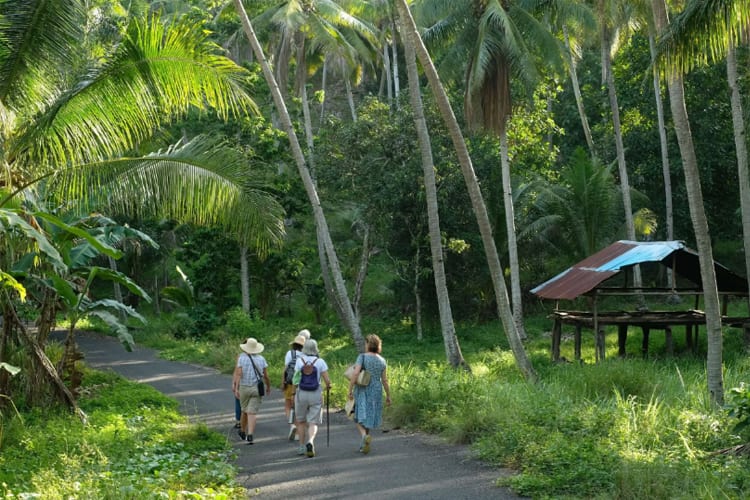
Disembarkation
AM: We reach the island of Ternate. This colorful city was the center of the spice trade for several centuries, and the imprint of the Dutch and the Portuguese can still be seen. In fact, its warehouses are still filled with fragrant piles of clove and nutmeg. Nearby is the splendid 17th-century, pagoda-style royal mosque, and the Sultan’s Palace with its rich collection of heirlooms.
There’s a choice of forts to visit from the turbulent colonial era, such as the well-restored Fort Tolukko (Portuguese, 1540). Wallace rented a house on Ternate for three years and used it as his base for the exploration of the Moluccas. It was whilst living here, very soon after returning from Dodinga, that he posted his legendary 'Letter from Ternate' containing his independently conceived theory of natural selection to Darwin.
We will visit the probable site of his house near Fort Oranje, before going back to the Ombak Putih to say farewell to the Ship's Naturalist, the captain, and the crew.

Embarkation
AM: We will meet you either on arrival at the airport or in your hotel lobby. At 8 am we transfer you 40 minutes to the tiny village of Sei Gohong where we board local canoes to observe orangutans on the beautiful forested island of Pulau Kaja. The island is managed by the Borneo Orangutan Survival Foundation or BOS. After observing orangutans in their island habitat, we then transfer to BOS’s nearby Education Centre in Nyaru Menteng for more information on their activities.
PM: Returning to Palangka Raya harbor, we board the Rahai’i Pangun for lunch and a short cruise through the city upstream. Boarding vehicles, we travel 30 minutes to the historic towns of Bukit Rawi and Sigi to see the magnificently painted sandungs, receive a Dayak welcome, and learn about history.
We then return to the boat to start the cruise downstream to moor overnight in a quiet location.
Notes :
- To get to the start point of the river cruise in Borneo, guests will have to fly from either Bali or Jakarta on the day before the cruise’s official start date and stay overnight in a hotel. Please contact our Destination Specialist to discuss your flight arrangements into Indonesia before booking.
- The length of these cruises is between 12-days to 14-days long. This is because the Orangutans and Dragons cruises are a combination of a Borneo riverboat cruise and a Komodo cruise and we need to match, and both boats have different schedules. Where those schedules align perfectly, the trip is 13 days. Where there is the extra day(s) between the two boat trips, we have the day(s) spent in Bali.
- The trip will sometimes require guests to fly to Komodo to join the boat and cruise back.

Blackwater Lake Bagantung
AM: In the early morning, we will use motorized canoes to visit the extensive Blackwater Lake Bagantung. This is a unique peatland swamp ecosystem where we have the opportunity to spot birds, other wildlife, and fishing activities by the villagers.
Returning to the village of Pusaka, we learn the local self-defense or shadowboxing exercise. Try it yourself!
PM: Returning to the boat, we continue the cruise downstream to Tumbang Nusa village. On arrival, we will have a walking tour of the village to see some of their traditional livelihoods. The boat will continue to cruise downstream, passing the large forested Selat and Badak Islands, where it may be possible to spot orangutans. We then find a quiet place to tie up overnight.

The Village of Pilang
AM: The boat continues downstream to the village of Pilang where we take a short walk in the forest area near the village to see the process of rubber tapping (Mamantat) and rattan harvesting (Manetes). Our village guide will also point out some local medicinal plants growing in the forest. We then have a walking tour of the village to see some of their traditional livelihoods. Watch the local ladies at their rattan weaving process and meet the villagers. Over a special tea and coffee, with traditional Dayak cakes, we will be entertained with a Kacapi (two-stringed instrument) performance.
PM: Escaping the heat of the midday sun, we will return to the boat for lunch. The boat will cruise downstream to find a quiet mooring place for overnight.
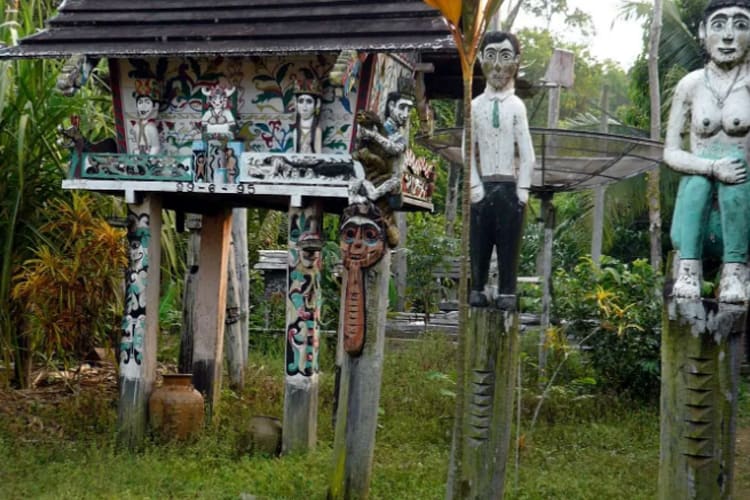
Sebangau National Park
AM: We have a relaxed breakfast before our very special visit to the Sebangau National Park. For this adventure, we pack our bags and transfer to the car for the journey to Kereng Bangkirai village (40 minutes). Here we join a canoe to travel a half-hour across the amazing reflections of Lake Sebangau to the tiny Koran River. Explore the boardwalks and forests on the eastern boundary of the park. We will visit the information center established there and walk along boardwalks provided for visitors to more easily explore the area to catch sight of birds and perhaps wild orangutans.
PM: We return to the village of Kering Bangkirai for a cool drink for transfer to the vehicle and return to the airport. Upon arrival in Bali, you will be escorted to your hotel for the night.
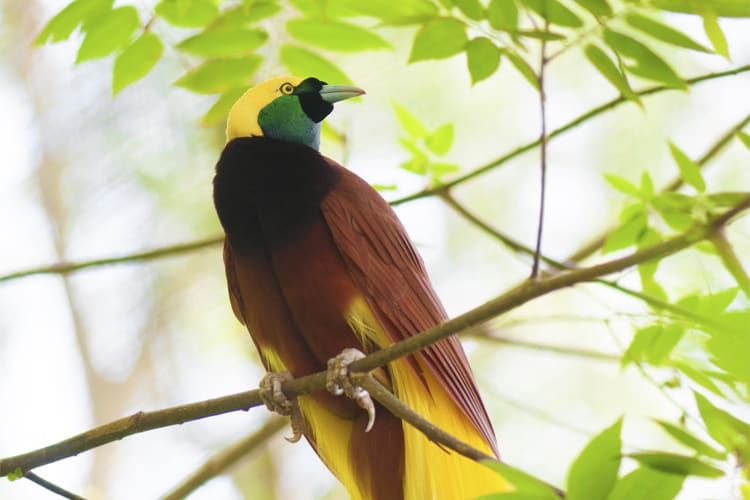
Chill and Relax
AM & PM: You will be greeted by your Tour Leader(s) either at the airport or your hotel if you’ve arrived before the embarkation day. As you settle into your new home, we will head to our first snorkeling session of the trip. Go ashore searching for the fearsome Komodo dragons found only in the Komodo National Park. This is the world’s largest lizard, growing up to a length of three meters and weighing up to approximately 70 kilograms. Enjoy some magnificent snorkeling on some of Komodo Park’s best reefs. Snorkel at a favorite hangout of sea turtles, where we will have a chance to swim with these gentle reptiles as they cruise along the reef’s shallow water.

Komodo National Park
AM & PM: Enjoy some magnificent snorkeling on some of Komodo Park’s best reefs. Snorkel at a favorite hangout of sea turtles, where we will have a chance to swim with these gentle reptiles as they cruise along the reef’s shallow water.

Exploring Komodo National Park
AM & PM: Wake up off the coast of a beautiful uninhabited island with a beach of pure white sand with some sparkles of powdered red coral, creating the effect of a “pink beach.” We will spend the morning here, swimming, paddle boarding, and snorkeling on the beautiful coral reef that lies parallel to the beach.
Cruise to a nearby active volcanic island where we will enjoy a unique snorkeling experience where volcanic gasses escape in the form of bubbles from the sea floor among the corals, with the metallic black volcanic sand below being home to an abundance of very interesting invertebrates.
Spend the day at a strange and mystical volcanic island with a sunken crater lake in its center that was filled with saltwater when the nearby Mt Tambora catastrophically erupted in 1815. Here we will swim, kayak and paddleboard on the lake.

Enjoying The Nature
AM & PM: Wake up off the coast of a beautiful uninhabited island with a beach of pure white sand with some sparkles of powdered red coral, creating the effect of a “pink beach.” We will spend the morning here, swimming, paddle boarding, and snorkeling on the beautiful coral reef that lies parallel to the beach.
Cruise to a nearby active volcanic island where we will enjoy a unique snorkeling experience where volcanic gasses escape in the form of bubbles from the sea floor among the corals, with the metallic black volcanic sand below being home to an abundance of very interesting invertebrates.
Spend the day at a strange and mystical volcanic island with a sunken crater lake in its center that was filled with saltwater when the nearby Mt Tambora catastrophically erupted in 1815. Here we will swim, kayak and paddleboard on the lake.

Amazing Experience with Whale Shark
AM & PM: Prepare for an exhilarating opportunity to swim with whale sharks, the majestic gentle giants of the sea. These massive but harmless animals have long congregated here in the bay but now, thanks to travelers like you, we have formed a mutually beneficial alliance with the local fisherman who have their traditional small floating fishing platforms in the bay that attract the sharks. We can’t make any promises, as we don’t have these wild animals on a leash, but fingers crossed that we will see them.
Visit the beautiful village on Moyo Island for an amazing experience. Walk to the stunning waterfall and enjoy a refreshing dip in the cool water.

Cool Water & Breeze
AM & PM: Prepare for an exhilarating opportunity to swim with whale sharks, the majestic gentle giants of the sea. These massive but harmless animals have long congregated here in the bay but now, thanks to travelers like you, we have formed a mutually beneficial alliance with the local fisherman who have their traditional small floating fishing platforms in the bay that attract the sharks. We can’t make any promises, as we don’t have these wild animals on a leash, but fingers crossed that we will see them.
Visit the beautiful village on Moyo Island for an amazing experience. Walk to the stunning waterfall and enjoy a refreshing dip in the cool water.

Komodo National Park
AM: Visit a nearby active volcanic island where we will encounter a large wooden pinisi boat with the same pedigree and history very own ships being built on the beach. Walking around this small village, get a feel for their simple way of life, chat with the locals, and maybe buy some handmade textiles as a souvenir.
Entering the Komodo National Park again, we will go snorkeling and beachcombing. We'll have the opportunity to participate in the coral restoration program, where you will see how the corals and fish populations have grown since they were first transplanted in 2015.
PM: Experience one of our famous beach BBQs under a night sky filled with millions of stars as you feast on the fantastic local delicacies prepared by our chef, all accompanied by live musical entertainment from our talented crew.
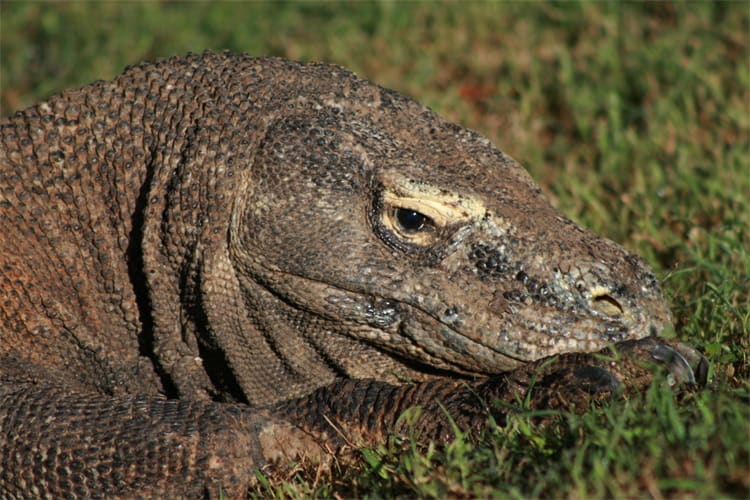
Komodo National Park
AM: Visit a nearby active volcanic island where we will encounter a large wooden pinisi boat with the same pedigree and history very own ships being built on the beach. Walking around this small village, get a feel for their simple way of life, chat with the locals, and maybe buy some handmade textiles as a souvenir.
Entering the Komodo National Park again, we will go snorkeling and beachcombing. We'll have the opportunity to participate in the coral restoration program, where you will see how the corals and fish populations have grown since they were first transplanted in 2015.
PM: Experience one of our famous beach BBQs under a night sky filled with millions of stars as you feast on the fantastic local delicacies prepared by our chef, all accompanied by live musical entertainment from our talented crew.

Disembarkation
AM: After breakfast on our last day, we will take you on a scenic drive towards Melo Village, where you will witness the traditional Caci dance performance. Local strongmen perform a ritual whip-fight between two rivals in which the players, each armed with a rattan shield and a whip, will try to hit each other while dancing to the rhythm of traditional acoustic instruments.
PM: After lunch on the boat, we will say farewell to the crew and your fellow shipmates as you disembark and continue onto your next destination.

Embarkation
AM: Starting your adventure today we will have a tour of Ternate's historical highlights before boarding our ship and meeting the crew and settling into your new home for the next two weeks.
PM: Over lunch, we will set sail for the short journey to Halmahera Island's Dojinga Village, a pivotal place in scientific history, where the naturalist Alfred Russel Wallace first came up with the Theory of Evolution by Natural Selection.
Later that afternoon, we will enter the water for the first time and snorkel and swim on our first coral reef before heading south as the sun sets behind the perfectly conical volcanic islands peaks of the northern Moluccas.

Guraici Archipelago
AM: Today we will visit the Guraici Archipelago, a chain of islands with white sandy beaches, vibrant coral reefs and some lovely local villages. We will spend a full day here snorkeling, swimming and pay a visit to one of the villages to meet the local people. The islands are part of a government-controlled conservation area, designed to protect the reefs and the many beautiful marine species that live there. These protected waters also provide the perfect location for beginner or rusty snorkelers to become familiar with the water and to home their skills for the many days of snorkeling that lie ahead.
PM: Late in the evening we will be heading to the island of Bacan.

Special Day
AM: Today we will be searching for some very special species of butterfly, some unique birds and some quirky mammals. We will explore the deep forest and rivers of Bacan Island, where Wallace first saw what he called ‘the most beautiful butterfly in the world, the Golden Birdwing. During our trek the other species that we might see here include cuscus, the black-crested macaque and some hornbills.
PM: After lunch we will spend the afternoon snorkeling and swimming on the nearby reef and beaches.

Culture and Spice
AM: Culture and spice will fill our day as we find ourselves off the coast of the white sand island of Obi Latu, a place filled with clove and nutmeg plantations. Obi Latu's steep hillsides are covered in clove and nutmeg forests, reaching back to the rich and heady days of the spice trade, which saw many a European power vying for control of the East Indies. While the spice trade might not be what it once was, the growers can still make a good living on this remote island in the Banda Sea.
PM: We will go ashore and walk through the villages and plantations and see the fruits and spices growing on the trees and drying in the sun ready for market, in the same way it has for centuries.

In The Middle of The Banda Sea
AM: Today will be a day for snorkeling, culture and history as we find ourselves in the middle of the Banda Sea in the remote and breath-taking Sulu Archipelago. We will spend the morning exploring the beaches and reefs of Mangoli Island, where the reefs are teeming with fish and other marine life. True to the desert island locale, we will also kayak, paddle, swim, explore and relax on the white-sand beaches.
PM: Later that day, we will feast on some history and culture as we visit the local village market and visit the ruins of a 17th century Dutch fort, which once protected the spice trade along these routes.

Local Warriors
AM: The cultural experiences ratchet up a notch today with a war dance performed in our honor, while the nighttime will be filled with Indonesian music. We will go ashore on Taliabu Island, where we will be treated to a traditional dance known as the ‘cakalale’, by local warriors. We will also have a chance to explore the local village and meet the people of this remote isle.
PM: The afternoon will see us snorkeling on a reef teeming with fish before moving to another deserted island, where we can swim, kayak and relax. This evening the crew will prepare a beach BBQ for us, and they will regale us with traditional Indonesian folk songs and sea shanties as we party by firelight late into the night.

From Reff to Lake
AM & PM: The Bokan Islands are an area of unsurpassed beauty and today will be a day of marine exploration and relaxation as we snorkel, swim, paddle and kayak around the glorious reefs, beaches and islands with many caves and snorkeling spots. We also have the rare privilege to swim in a small marine lake filled with stingless jellyfish, the exotically named Danau Piasu Botangan, one of only 20 lakes of its kind in the world.

Trio Unique Experiences
AM: A trio of unique experiences await us today involving culture, conservation and wildlife. We will visit the bustling Indonesian island port town of Bangai, a place filled with activity and commerce. Here on Banggai Island we will visit the local market, explore the neighborhoods, the sultan’s palace and the Maleo bird egg ‘museum’, and all from our fleet of brightly colored motor rickshaws, which will be on the dock awaiting our arrival. We will pay a hands-on visit to LINI, an NGO doing great work with coral restoration on the surrounding reefs, in addition to working with local fishermen in finding sustainable solutions for supplying fish for overseas markets and the live aquarium fishing trade.
PM: The last of the day’s highlights will be a snorkel on a local reef where we will see the most elegant, but very threatened, Banggai Cardinal Fish – a darling of saltwater aquarium lovers worldwide.

The Maleo
AM: Today you will have the chance to see possibly one of the strangest and most unique flightless birds found in the world - the Maleo. After a morning snorkel, we will sail north to visit the endemic Maleo in their beachside environment, the symbol of the province within which it lives. We visit a conservation project on the mainland where scores of Maleo live and breed. Entering in twos, we can watch them at their sandy nesting sites from a camouflaged hide as they go about their business.
PM: Later that afternoon, we set sail for the Togean Islands National Park, for some island hopping and spectacular snorkeling, wildlife and culture.

The Bajau Sea Gypsie
AM: The Bajau Sea gypsies of Southeast have a very unique way of life living in harmony with the water, and today you will get to see it up close. We will go ashore to Kabalutan Village, where a population of about 2500 Bajau call home, and we will be welcomed into their world to meet and talk with them about their lives.
PM: In the afternoon we will snorkel and swim on some pristine coral reefs before moving on further into the park.

Wildllife Experiences
AM: Some great wildlife experiences await us today both in the water and the air, with birds, fish and invertebrates as the main features. We will enjoy a snorkel on the lush reefs near the island of Malenge, before taking our snorkels and masks for a rare second swim with stingless jellyfish in nearby Lake Mariona, the second jellyfish lake on our route.
PM: We will visit a local village and meet the people, and enjoy a late afternoon walk in the local forest before being witness to a most amazing show of nature as flocks of hornbills come flying in to roost in the trees – a once in a lifetime sight only accessible with us.

Long Crossing Towards The Sulawesi
AM: Waking up in the east of the park, we will go snorkeling and visit a local village before setting sail on a long crossing towards the Sulawesi mainland, where we can relax, watch the world go by and take in the beauty of the sea from the decks of our ship.
PM: In the afternoon, our chef will offer a cooking class for those interested in learning how to prepare some traditional Indonesian dishes. For the rest of us, it's sunbathing, reading, relaxing and reflection. To finish the day, cocktails will be served on the back deck before a specially prepared dinner is served, followed by a party with the crew's band providing the music and entertainment.

North Sulawesi
AM: This morning, we are on the outside 'elbow' of North Sulawesi and we will have the chance for some more cultural exchanges and some impressive snorkeling. After breakfast we will go ashore to a remote village and meet the local people as they invite us into their village to share in their way of life. We will also go for a walk in the nearby forest on the lookout for birds.
PM: We will snorkel a local reef before we head north, stopping off en-route for another snorkel and a swim towards the end of the day before the crew throw us a final beach BBQ, where we will dance and sing into the night under the stars next to a roaring bonfire.

Disembarkation
AM: Waking up just off the coast near the Tasikoki Rescue Centre, we will go ashore and have a short tour of the impressive facilities at this NGO and hear all about their conservation program and also have the chance to see orangutan, cockatoos, sun bears, monkeys, and other endangered wildlife.
After a final swim and snorkel on the beach and then a short sail into Bitung Harbour, we will say a fond farewell to our crew and tour leaders and head to Manado City for either your onwards flights, or to start one of our special add-on programs. Whatever your schedule, it will have been our pleasure having you on board.

Embarkation
Embark on an extraordinary adventure as we present our highly anticipated Reposition Cruise, set to sail on a specific date. Get ready to redefine your cruising experience with a unique itinerary designed to captivate your senses and create lifelong memories.
AM: Starting your adventure today we will have a tour of Ternate’s historical highlights before boarding our SeaTrek ship and meeting the crew and settling into your new home for the next few weeks.
PM: Later that afternoon, we will visit the island of Tidore, another perfect volcanic cone rising from the tropical seas. Over lunch on board, we will have a magnificent view of the extinct Kiematabu volcano that dominates the island. Its slopes feature plantations of graceful clove trees, once found only upon this and a few adjacent islands, and so valuable in world trade that European nations fought for centuries to monopolize them.

Bacan Island
AM: Today we will be searching for some very special species of butterfly, some unique birds, and some quirky mammals. We will explore the deep forest of Bacan island, where Wallace first saw what he called “the most beautiful butterfly in the world”, the Golden Birdwing. During our trek, the other species that we might see here include cuscus, the black-crested macaque, and some hornbills.
PM: After lunch, we will spend the afternoon snorkeling and swimming on the nearby reef.

Obi Latu
AM: Culture and spice will fill our day as we find ourselves off the coast of the white sand island of Obi Latu, a place filled with clove and nutmeg plantations. Obi Latu's steep hillsides are covered in clove and nutmeg forests, reaching back to the rich and heady days of the spice trade, which saw many a European power vying for control of the East Indies. While the spice trade might not be what it once was, the growers can still make a good living on this remote island in the Banda Sea.
PM: We will go ashore and walk through the villages and plantations and see the fruits and spices growing on the trees and drying in the sun ready for market, in the same way, it has for centuries.

Banda Sea
AM: Today will be a day for snorkeling, culture, and history as we find ourselves in the middle of the Banda Sea in the remote and breathtaking Sula archipelago. In the morning, we will feast on some history and culture as we visit the local village market and visit the ruins of a 17th-century Dutch Fort, which once protected the spice trade along these routes.
PM: Later that day, we will spend the afternoon exploring the reefs that are teeming with fish and other marine life.

Taliabu Island
AM: The cultural experiences ratchet up a notch today with a war dance performed in our honor. We will go ashore on Taliabu island, where we will be treated to a traditional dance known as the ‘cakalele’, by local warriors. We will also have a chance to explore the local village and meet the people of this remote island.
PM: The afternoon will see us snorkeling on a reef teeming with colorful fish and possibly some kayaking and paddleboarding.

Bokan Island
AM: The Bokan islands are an area of unsurpassed beauty and today will be a day of marine exploration and relaxation as we snorkel swim, and paddle around the glorious reef, beach, and island with giant clams scattered around the area.
PM; We also have the rare privilege to swim in a small marine lake filled with stingless jellyfish, the exotically named Danau Piasu Botangan, one of only 20 lakes of its kind in the world.

Banggai Island
AM: A trio of unique experiences awaits us today involving culture, conservation, and wildlife. We will visit the bustling Indonesian island port town of Banggai, a place filled with activity and commerce. Here on Banggai island we will visit the local market, and explore the neighborhoods, the sultan’s palace, and the maleo bird egg museum, all from our fleet of brightly-colored motor rickshaws, which will be on the dock awaiting our arrival.
PM: We will pay a hands-on visit to LINI, an NGO doing great work with coral restoration on the surrounding reefs, in addition to working with local fishermen in finding sustainable solutions for overseas markets and the live aquarium fishing trade. The last of the day’s highlights will be a snorkel on a local reef where we will see the most elegant, but very threatened, Banggai Cardinal Fish – a darling of saltwater aquarium lovers worldwide.

Banggai Island
AM: The Bajau sea gypsies of Southeast Asia have a very unique way of life living in harmony with the water, and today you will get to see it up close.
PM: We will snorkel on one of the local reefs around a Bajau “sea gypsy” community famous for Southeast Asia’s nomadic cultures. A long overnight cruise awaits as we cross from the land of the sea nomads towards the Wakatobi National Park area.

Wakatobi National Park
AM: This morning we will officially arrive in the Wakatobi National Park area, a very hard-to-reach archipelago filled with fascinating culture and also one of Indonesia’s best national parks, with outstanding underwater life and natural beauty. You will enjoy a personalized tour of the island of Wangi-Wangi, with highlights that include a seaweed farm, meeting with a traditional weaving community, and the ruins of a centuries-old Dutch fort, a relic of the ancient Spice Trade.
PM: In the afternoon, we will be spending some time in the water where the water is clear and abundant with rich colorful corals. We can also take a little stroll around a number of sea nomad villages.

Wakatobi National Park
AM: Today is a day for all of us water babies. Snorkeling comes first thing in the morning at Tomia where we will snorkel in front of a magnificent house reef.
PM: In the afternoon, we will explore a nearby uninhabited atoll where guests have the chance to beach-comb, snorkel, paddleboard, or kayak.

Flores Sea
AM: In the morning, we will wake up to an uninhabited sea mount in the middle of the Flores Sea, rich in upwelling nutrients and a perfect habitat for fish and raising their young.
PM: We will spend some time here for snorkeling and some exploring before sailing onwards for overnight cruising towards the southern tip of Sulawesi.

Flores Sea
AM: Another full day of underwater adventure and exploration awaits us today. The whole day, we will spend exploring one of the most beautiful collections of reefs and atolls with palm-fringed white-sand beaches and crystal clear waters.
PM: The choice is yours entirely whether you would like to kick back and relax on board while watching the endless horizon dazzles with luminous blue waters, lounge on the sand, explore the shallow reefs on kayaks or paddleboards, or lose yourself in the frenzy of the rich reefs.
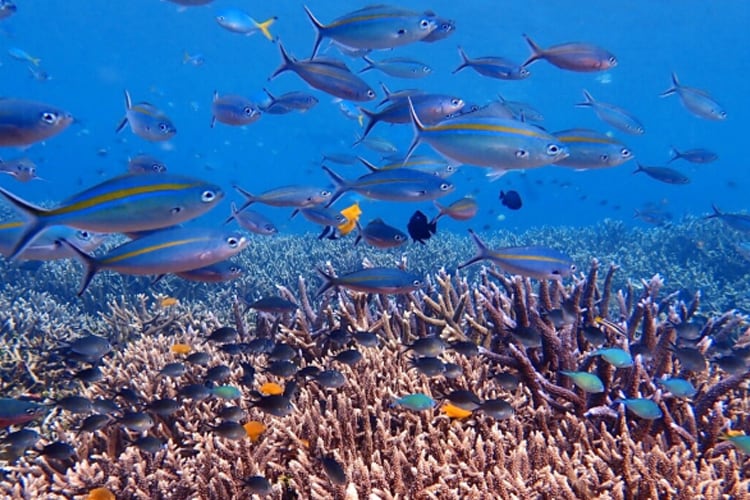
Bonerate
AM: Today we will walk amongst the hulls and hulks of a huge unlaunched flotilla of phinisi ships being built on a remote island archipelago. We will meet the shipwrights and discover their age-old traditions of shipbuilding that they have practiced for centuries in this forgotten corner of the world, using basic plans, wood, and a collection of simple tools and age-old techniques.
PM: Bonerate is rarely visited by tourists outside of our cruise, and seeing this open-air boatyard is an experience to be savored. As we walk through the village and along the beaches and meet the locals, we will gain a new appreciation for island life and for the kind of boat you have been cruising with for the past thirteen days.

Komodo National Park
AM: Giants will loom large in your day today: Komodo dragons, flying foxes, and manta rays, three of the biggest and most impressive animals in Indonesia. Our morning will be spent drifting with Manta Rays, the gentle giant as they glide by feed in the current at their go-to local cleaning stations.
PM: In the afternoon, we will take you for a privately arranged, ranger-led walk around the island of Rinca, where we will see not only Komodo dragons, but also their preferred menu of prey – monkeys, deer, pigs, and buffaloes. This evening, as the sun starts to set, we will gather on the deck and witness a most spectacular event as thousands of flying foxes leave their mangrove forest homes en masse on their nightly fruit-foraging missions.

Komodo National Park
AM: Rising early, you will have the chance to hike a scenic route of Gili Lawa Darat, or you can stretch your legs on the beautiful white-sandy beach. After the hike, we will be back on board for a mission: to count how many turtles can we spot with our own eyes on Siaba Besar island where it’s famous as turtle heaven.
PM: In the late afternoon, we will have relaxing beach time where you’re more than free to do pretty much anything you’d like ranging from snorkeling, paddleboarding, kayaking, or just beach combing. Tonight, the crew will prepare a beach BBQ for us as we all feast, sing and dance the night away by a roaring fire under the stars.
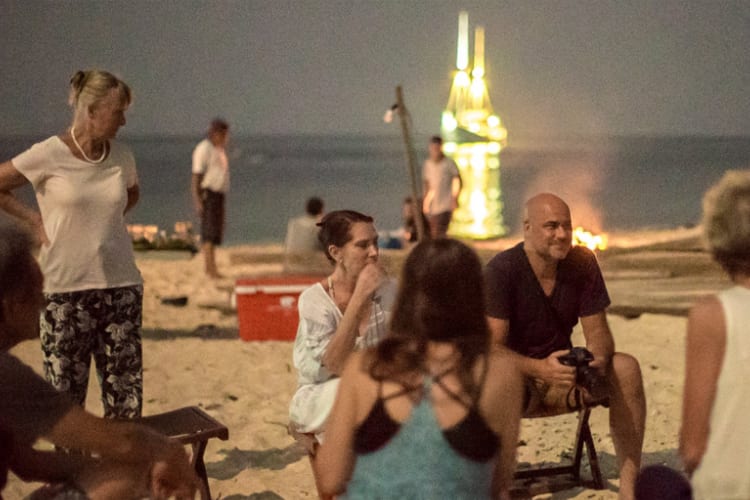
Disembarkation
AM: On our final day, we will wake as the boat is cruising slowly making its way to the magnificent town of Labuan Bajo. After a final Indonesian breakfast on the boat, we will say farewell to our crew, who have looked after us so well for the past few days, and transfer to Komodo airport for our flight and our onward journey.

Accommodations
Social Areas
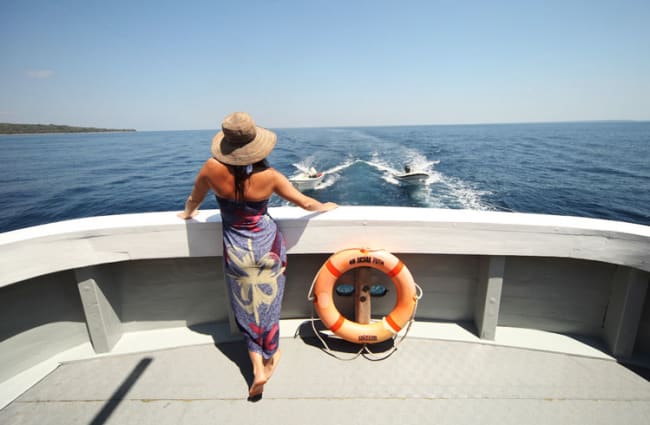
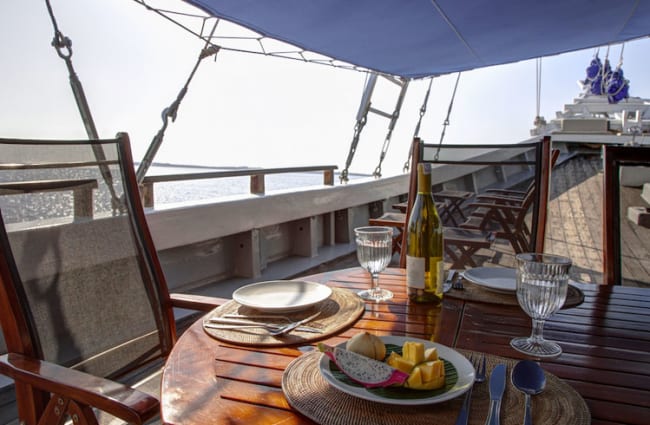
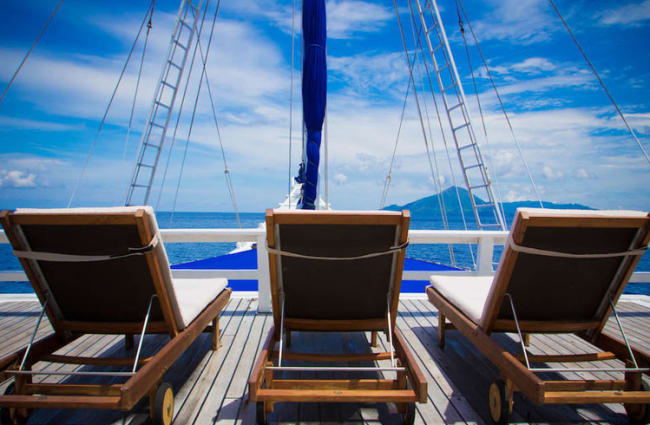
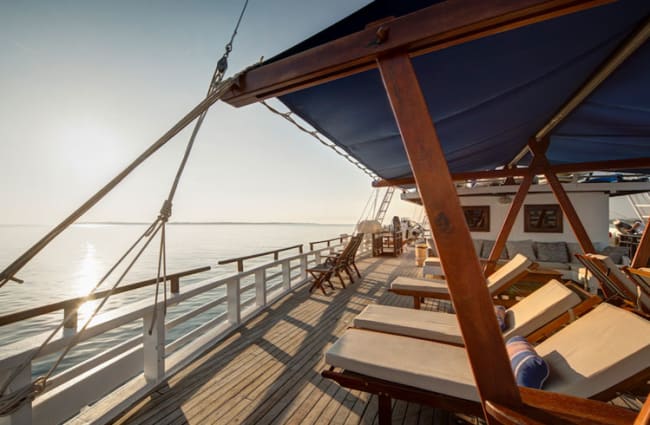


Suites & Cabins
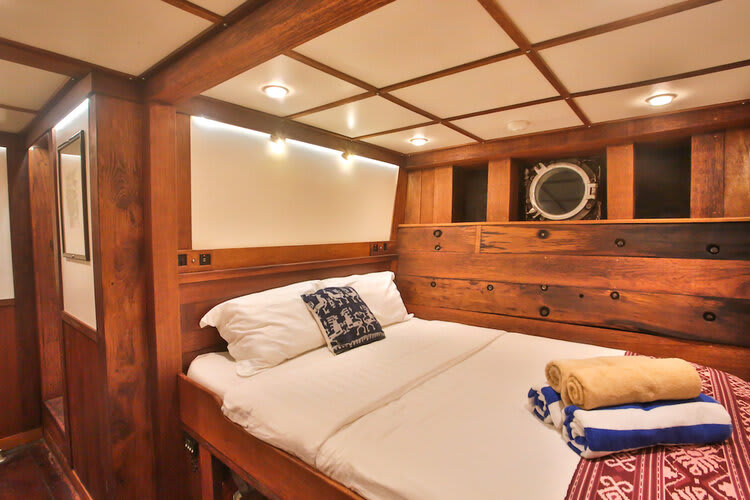
Double Bed Cabin
These rooms feature porthole windows that allow light to flow into the room naturally and allows guests to take in the beautiful scenery. They also come with private ensuite bathrooms featuring essential amenities like slippers, a basket of toiletries, and a hairdryer.

Triple Cabin
These rooms feature porthole windows that allow light to flow into the room naturally and allows guests to take in the beautiful scenery. They also come with private ensuite bathrooms featuring essential amenities like slippers, a basket of toiletries, and a hairdryer. Triple cabins have one double bed and one upper single bunk suitable for children 12 years or under.

Twin Bunk Cabin
These rooms feature porthole windows that allow light to flow into the room naturally and allows guests to take in the beautiful scenery. They also come with private ensuite bathrooms featuring essential amenities like slippers, a basket of toiletries, and a hairdryer. There are 4 twin bunk cabins with single bed one above the other.
Related Cruises
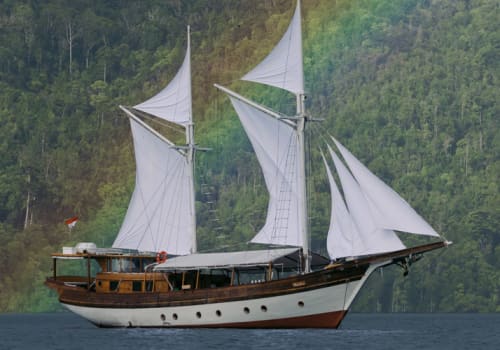
- Indonesia
Anne Bonny
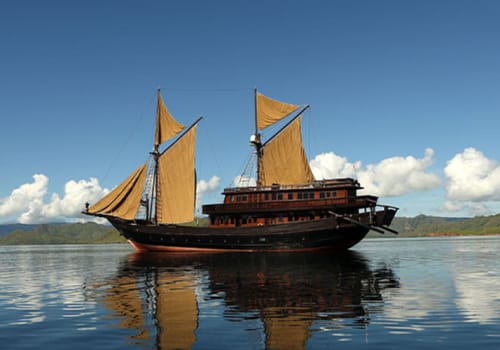
- Indonesia
Alila Purnama
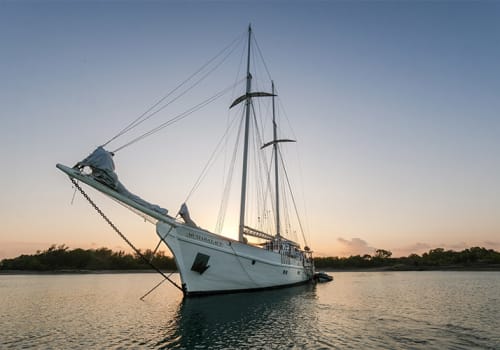
- Indonesia
Mutiara Laut
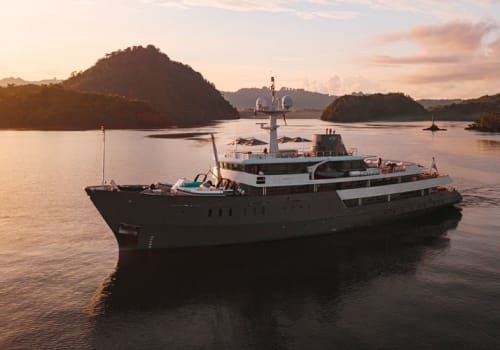
- Indonesia
Aqua Blu
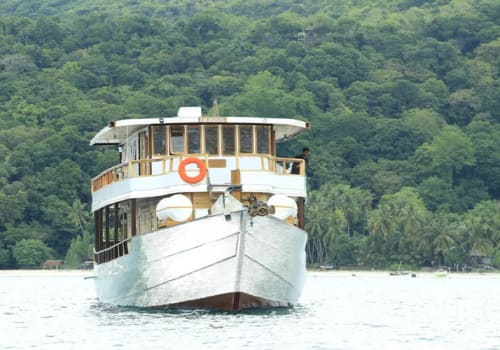
- Indonesia
Bajau

- Indonesia
Majik
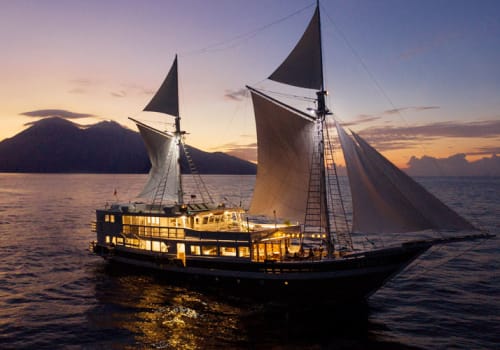
- Indonesia
Aliikai
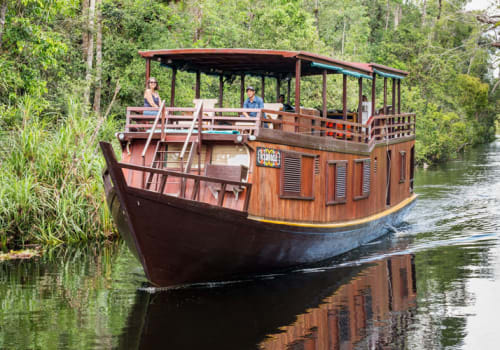
- Indonesia
Kumai
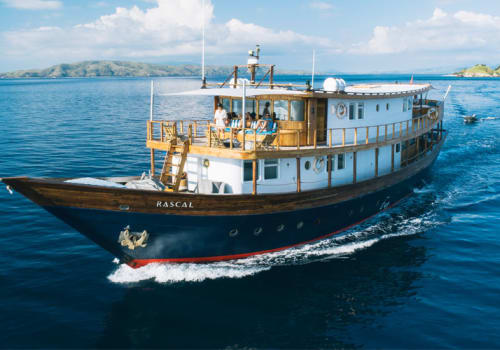
- Indonesia
Rascal
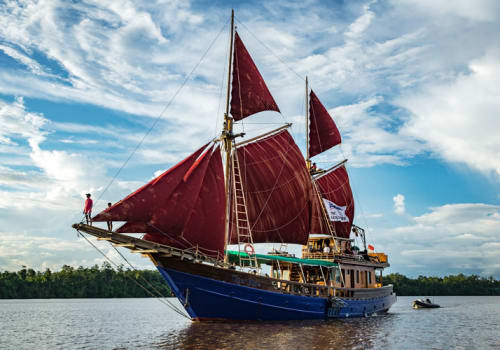
- Indonesia
Tiger Blue
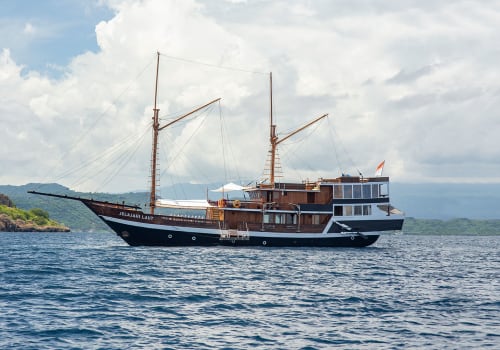
- Indonesia
Jelajahi Laut

- Indonesia
Bugis
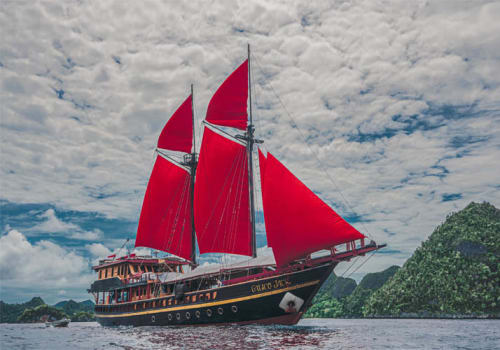
- Indonesia

